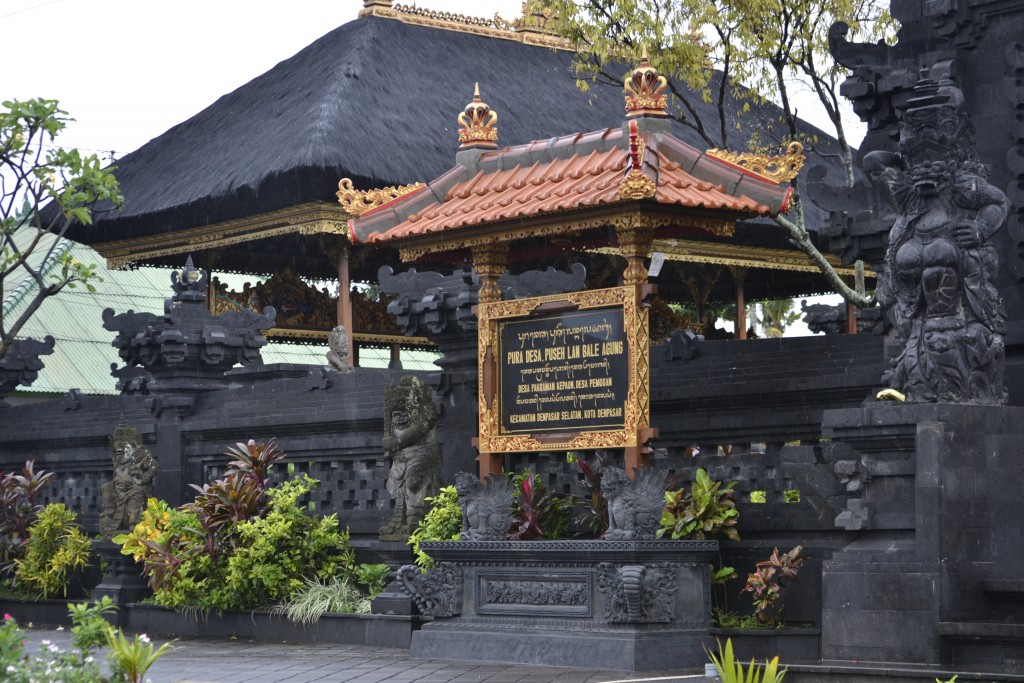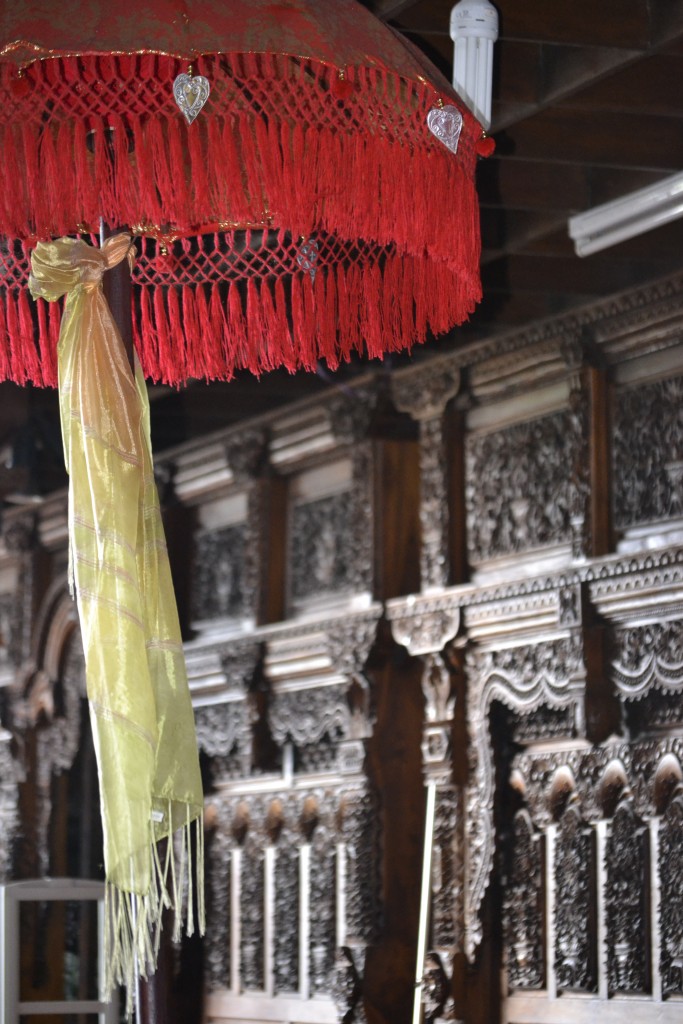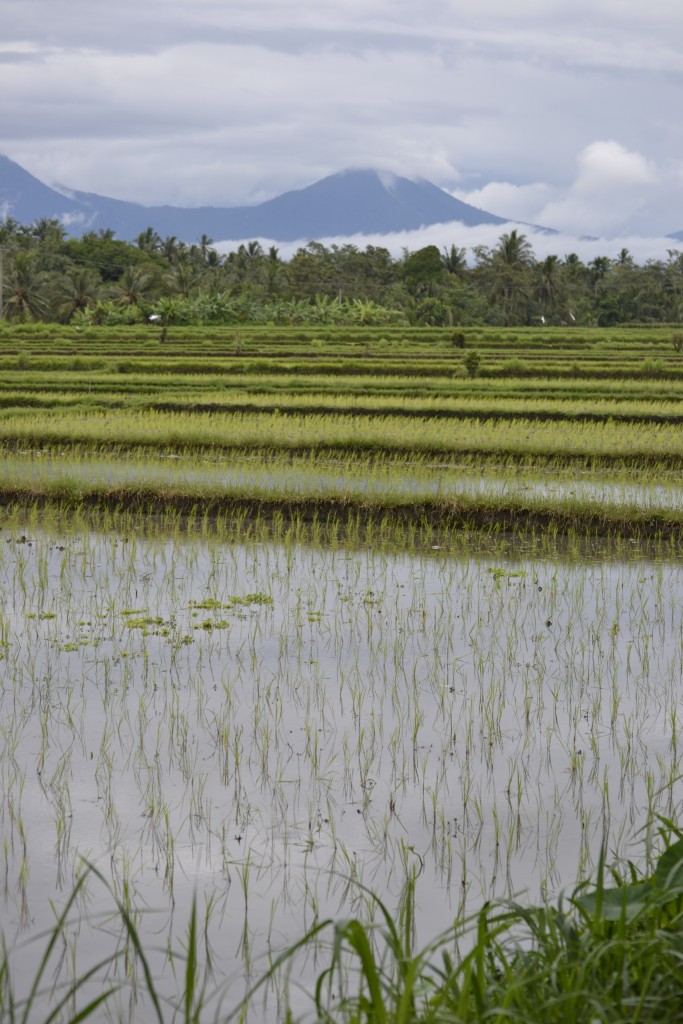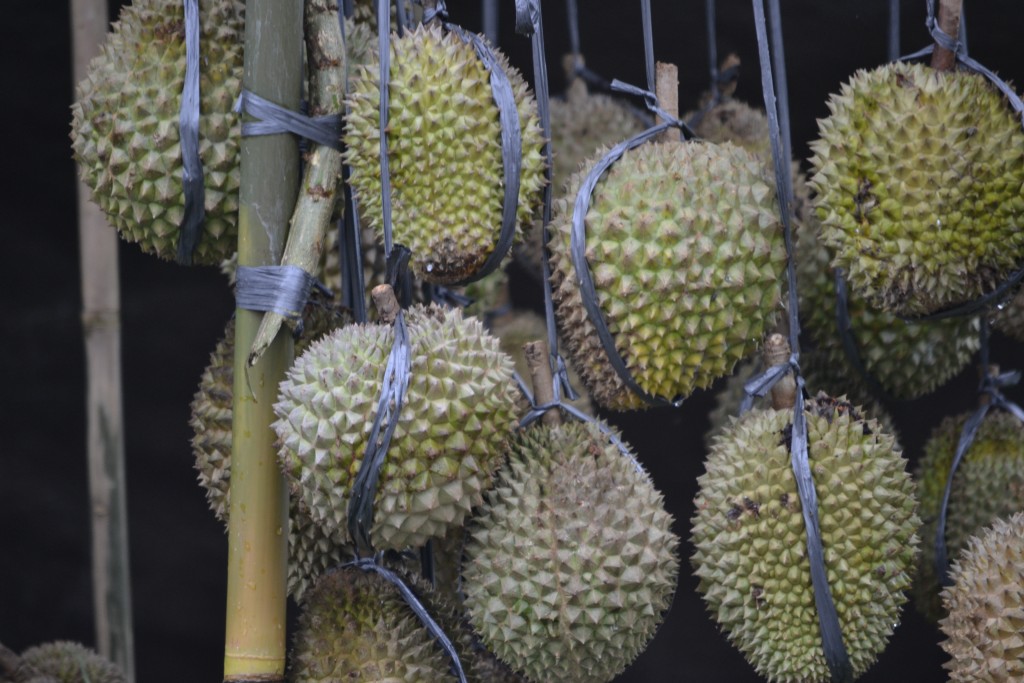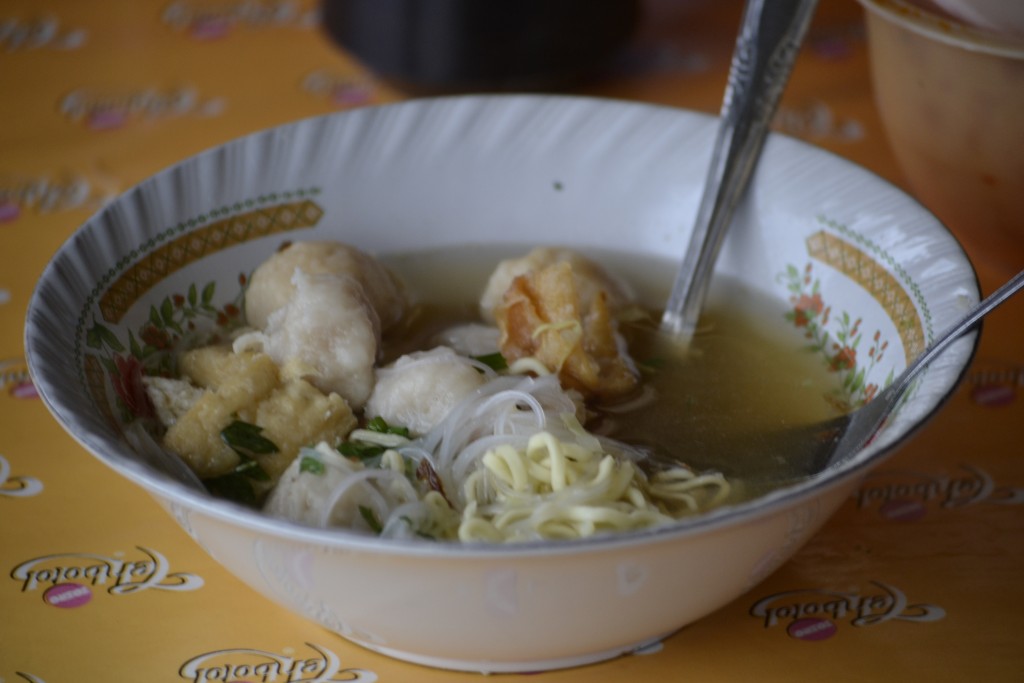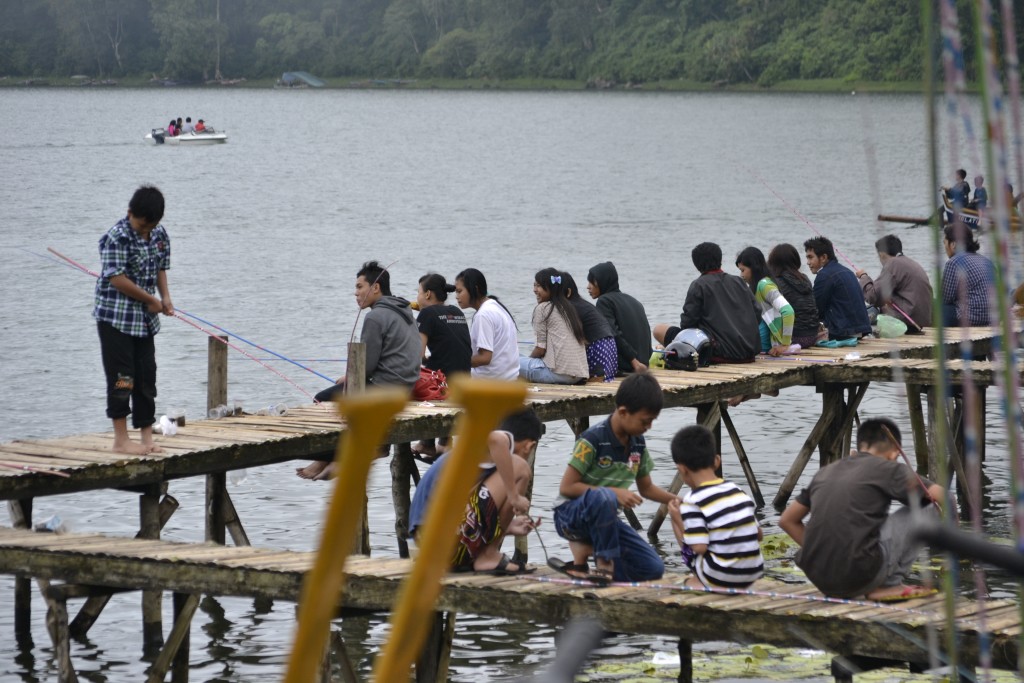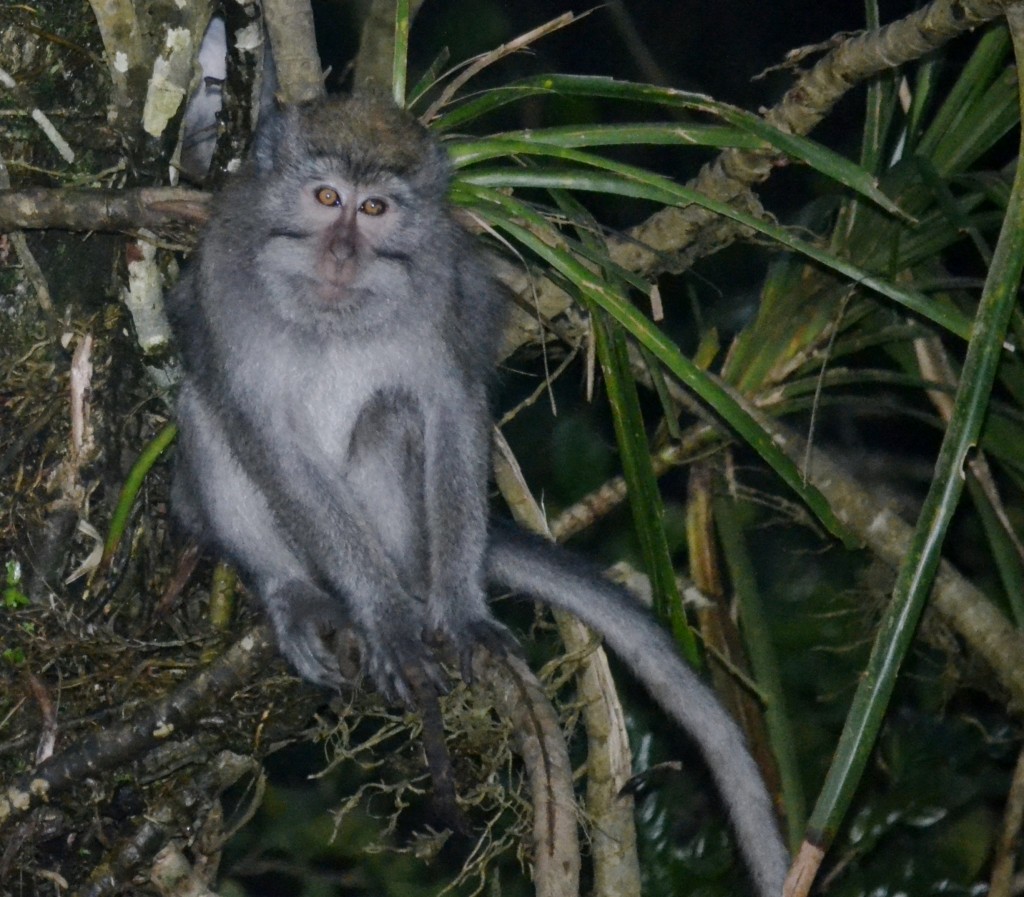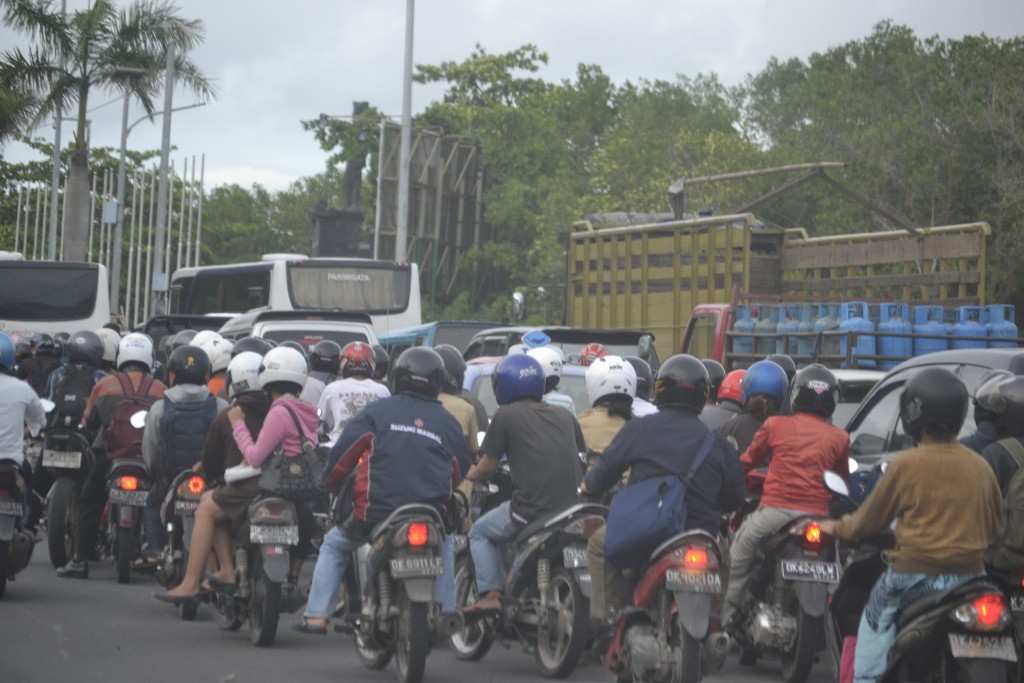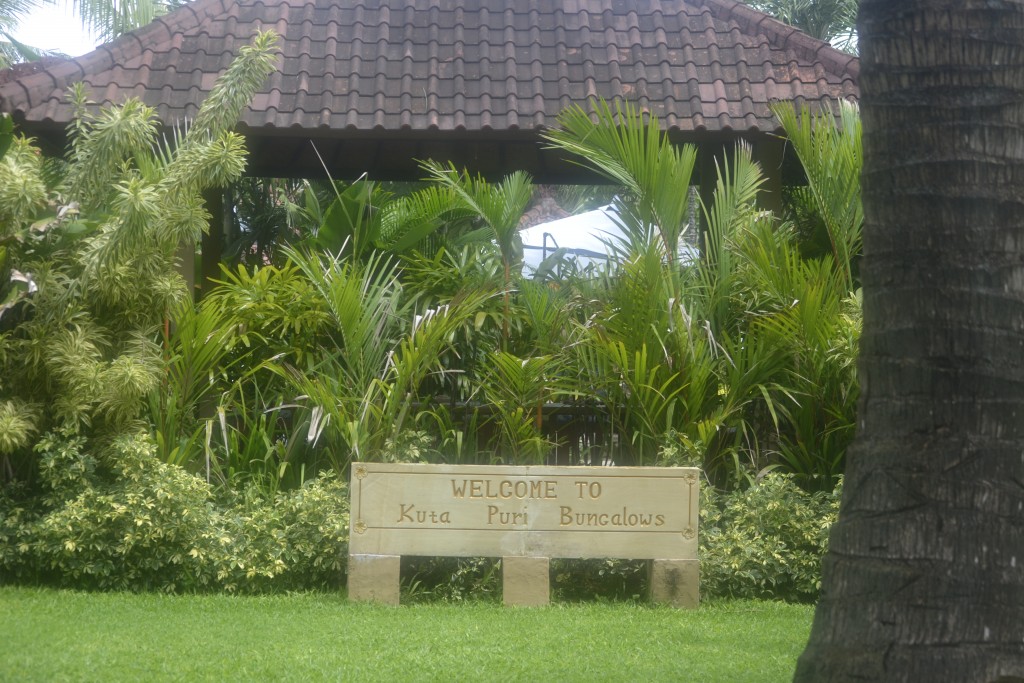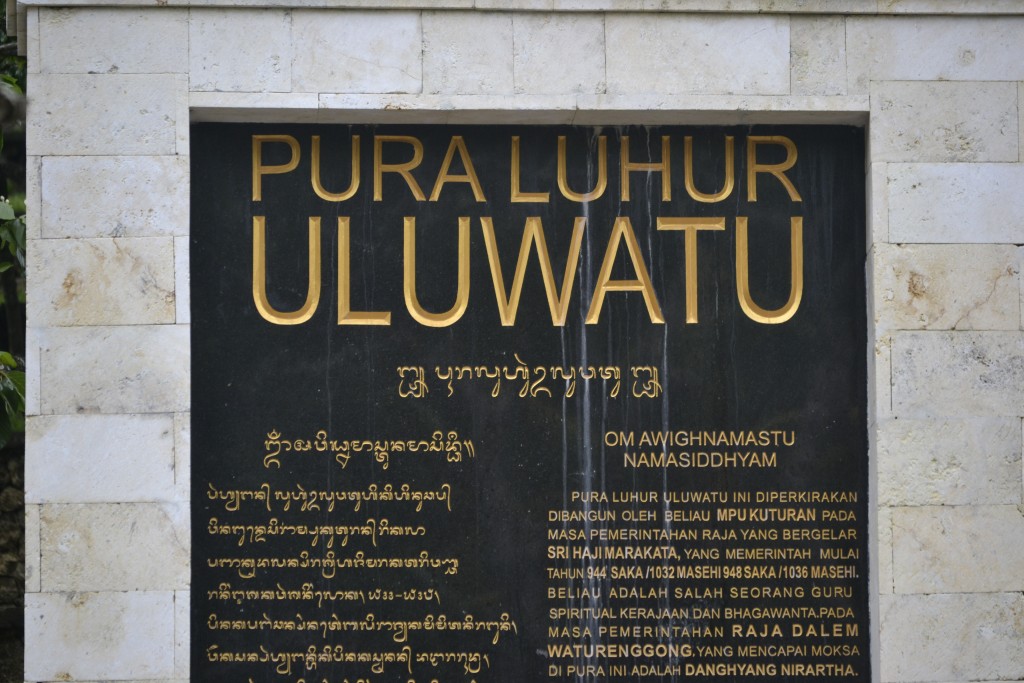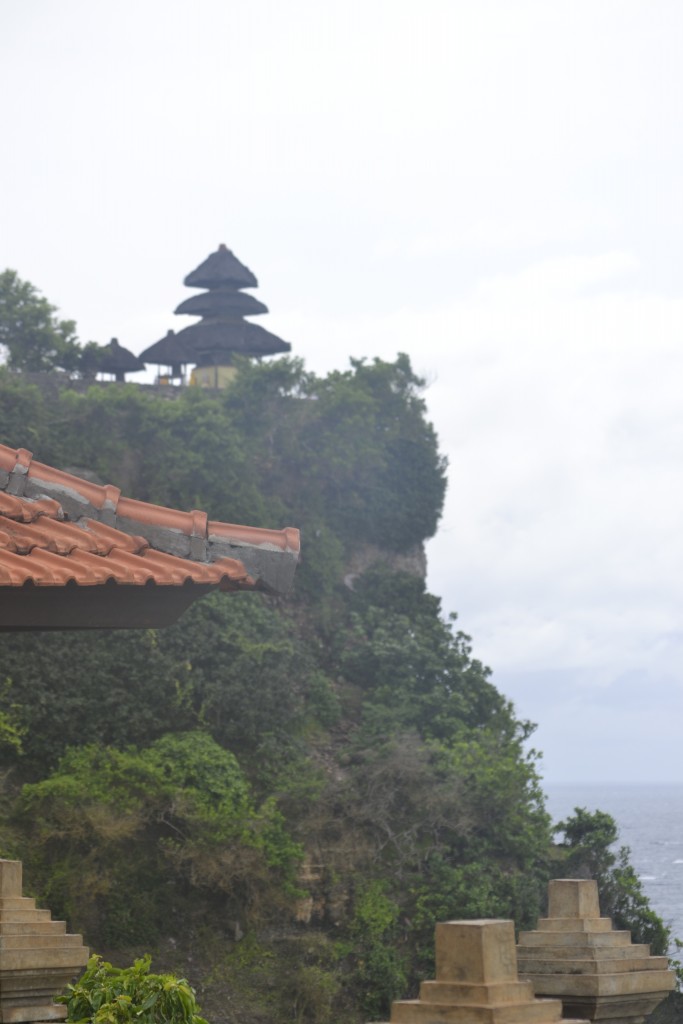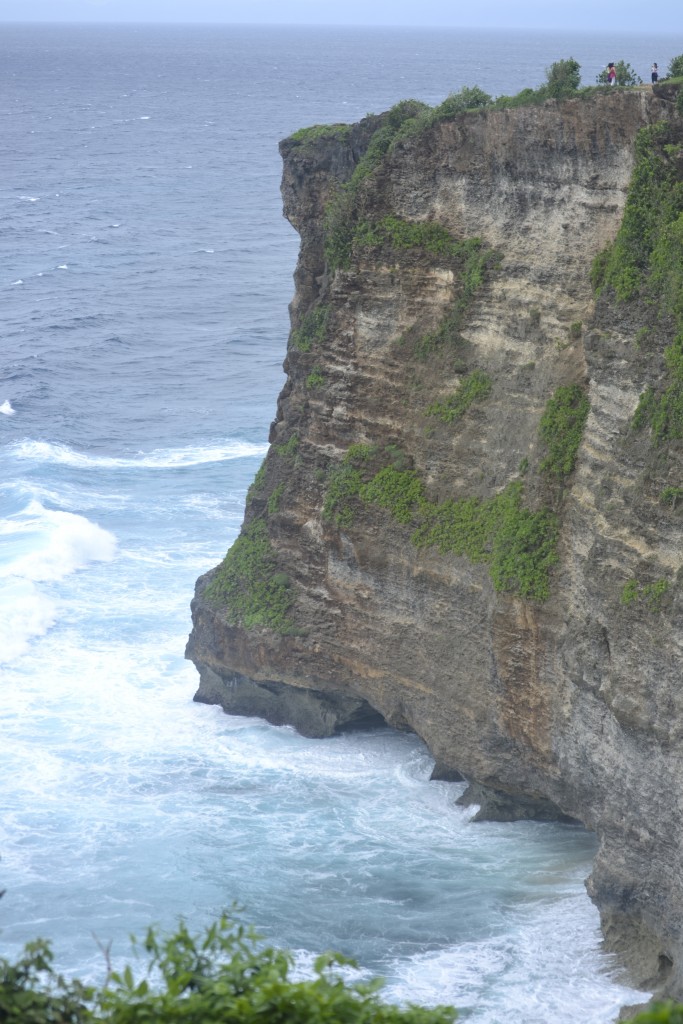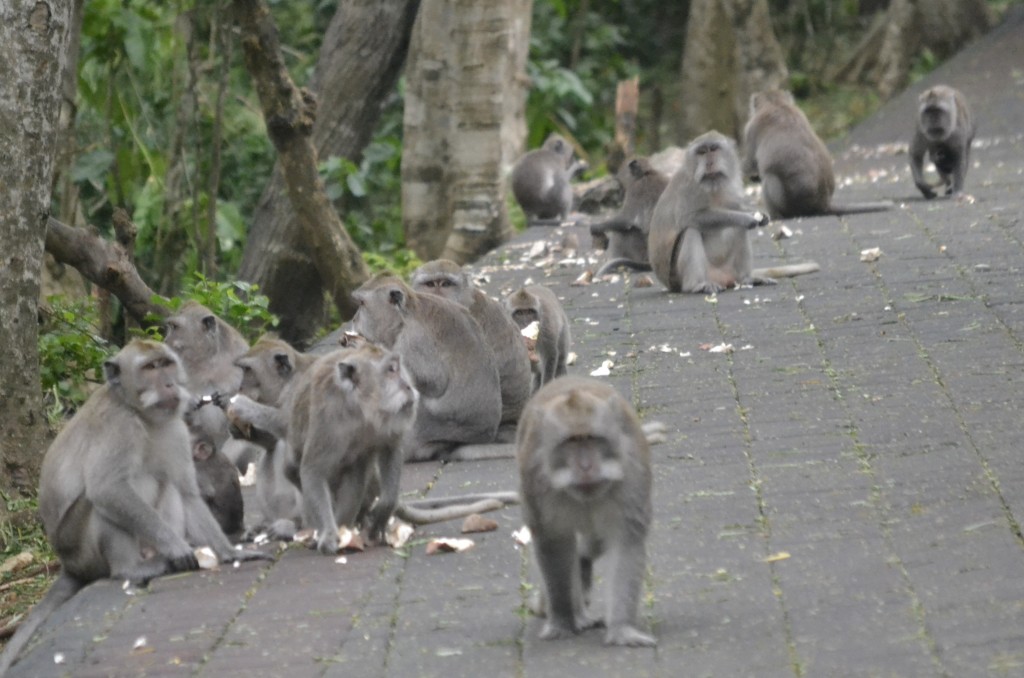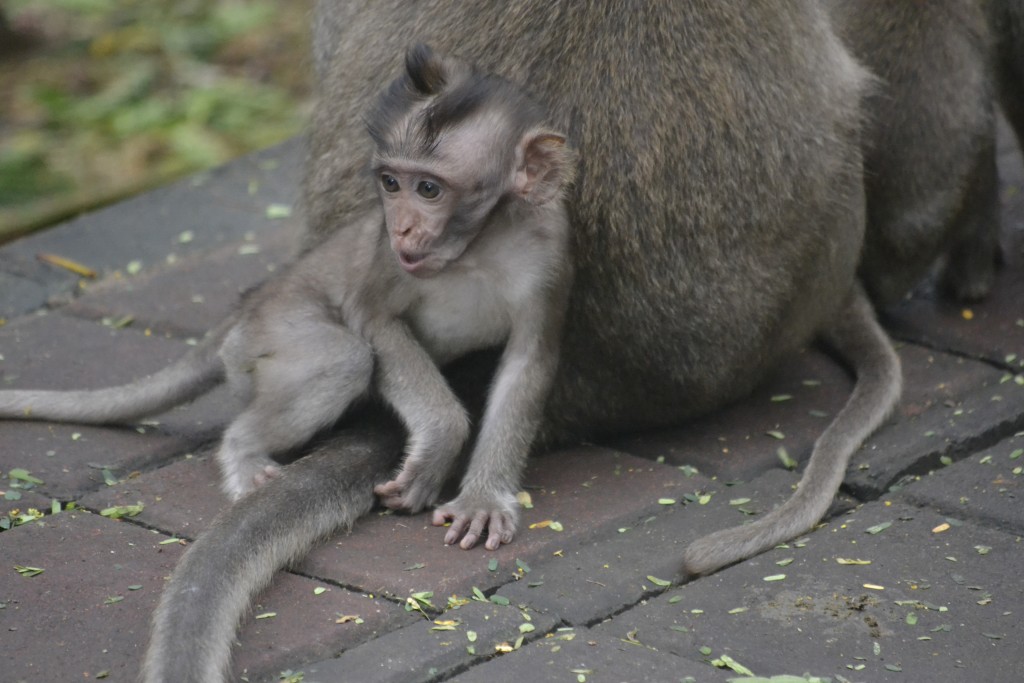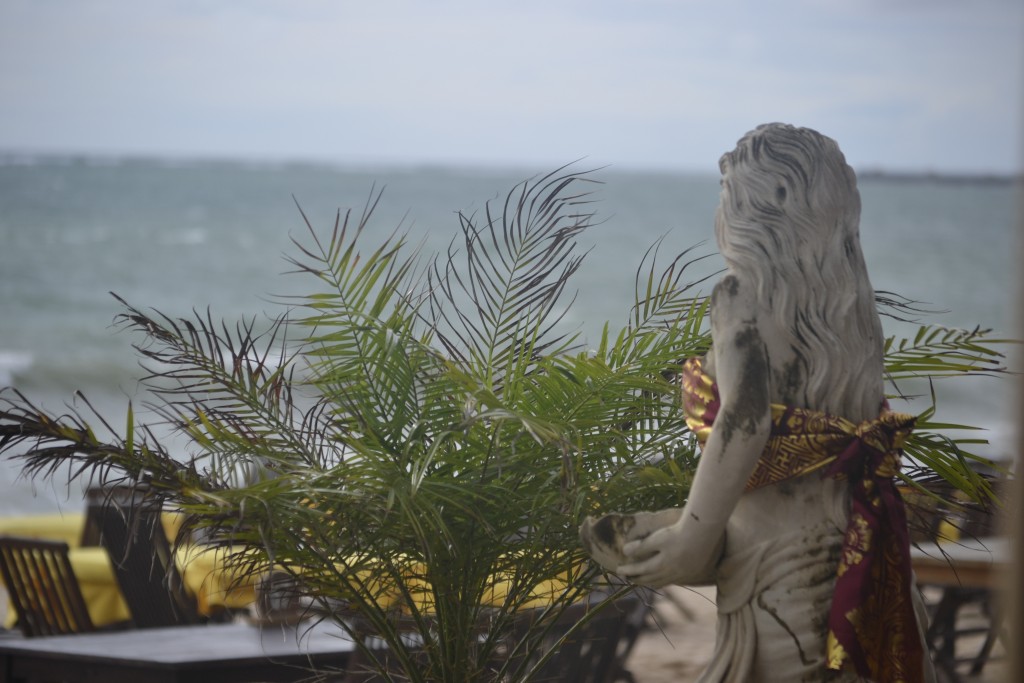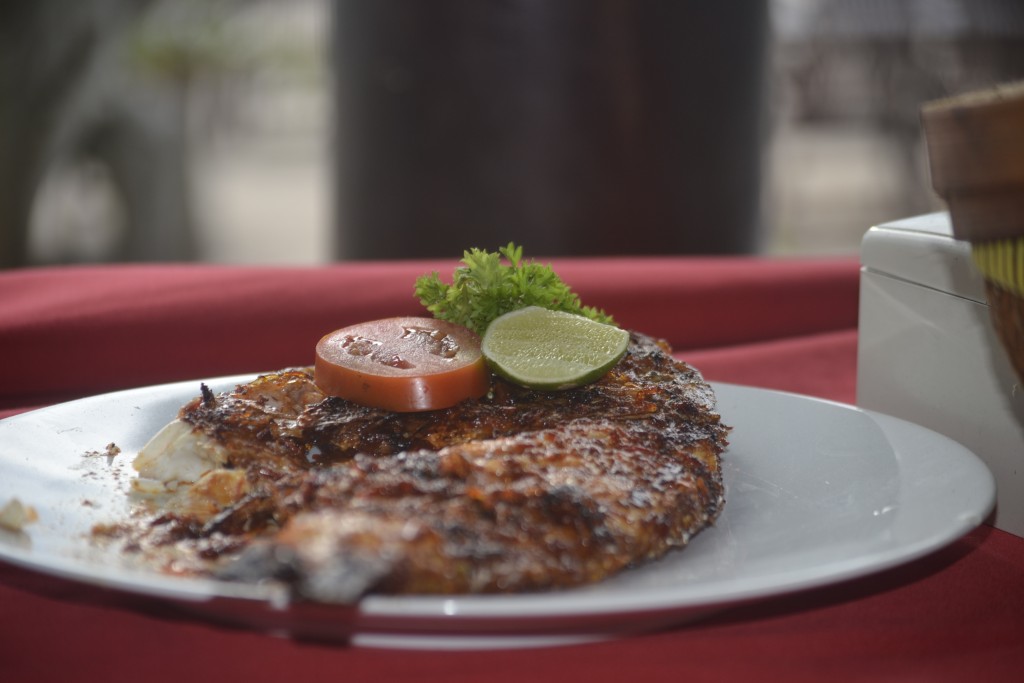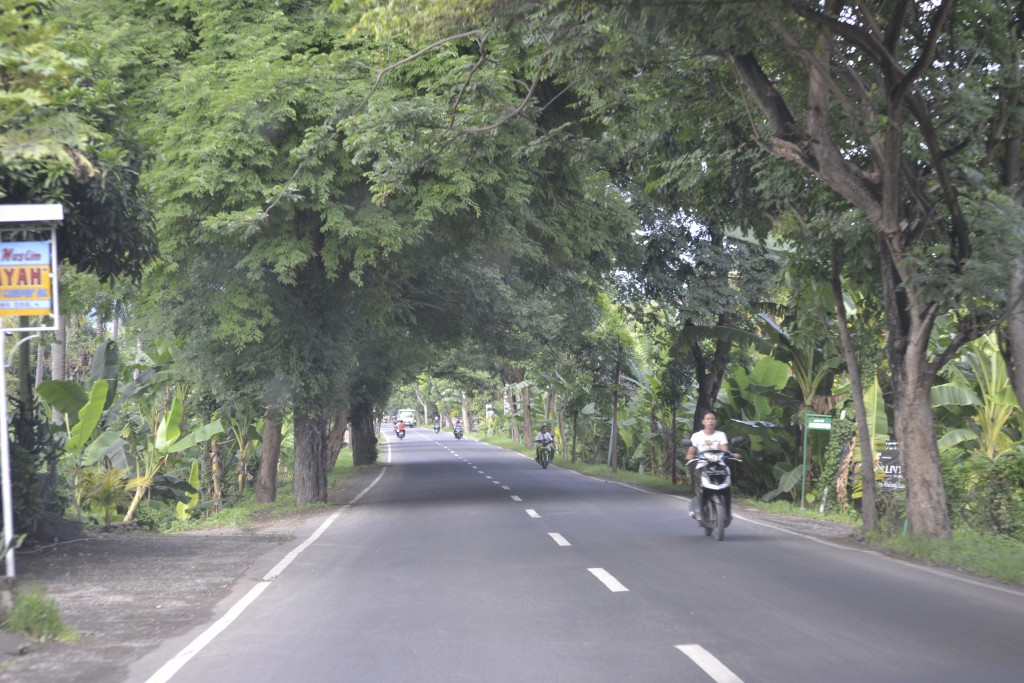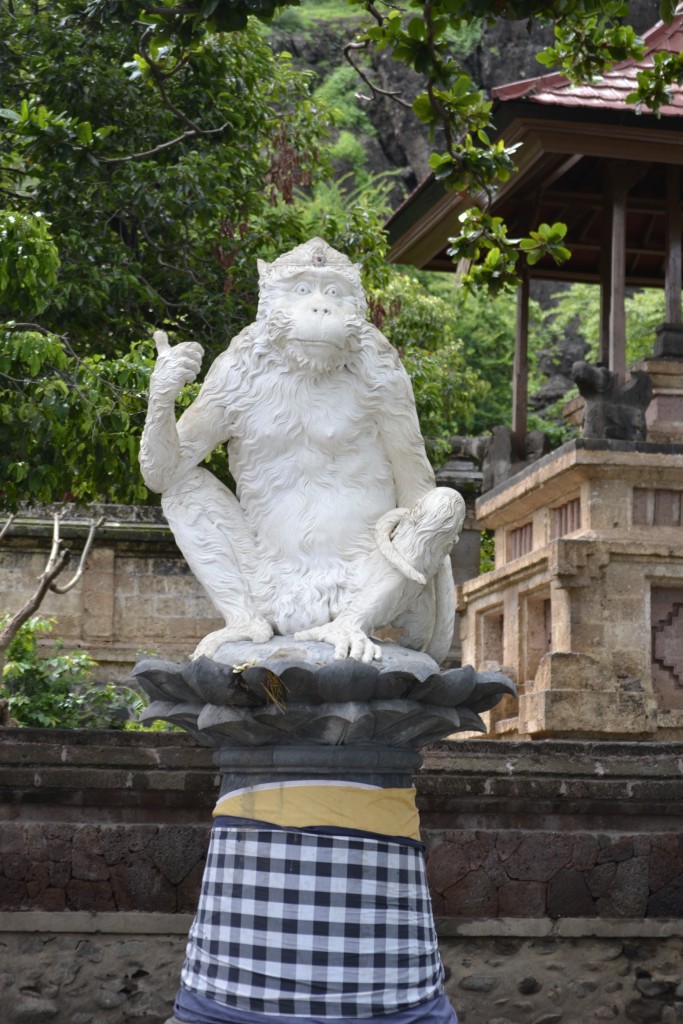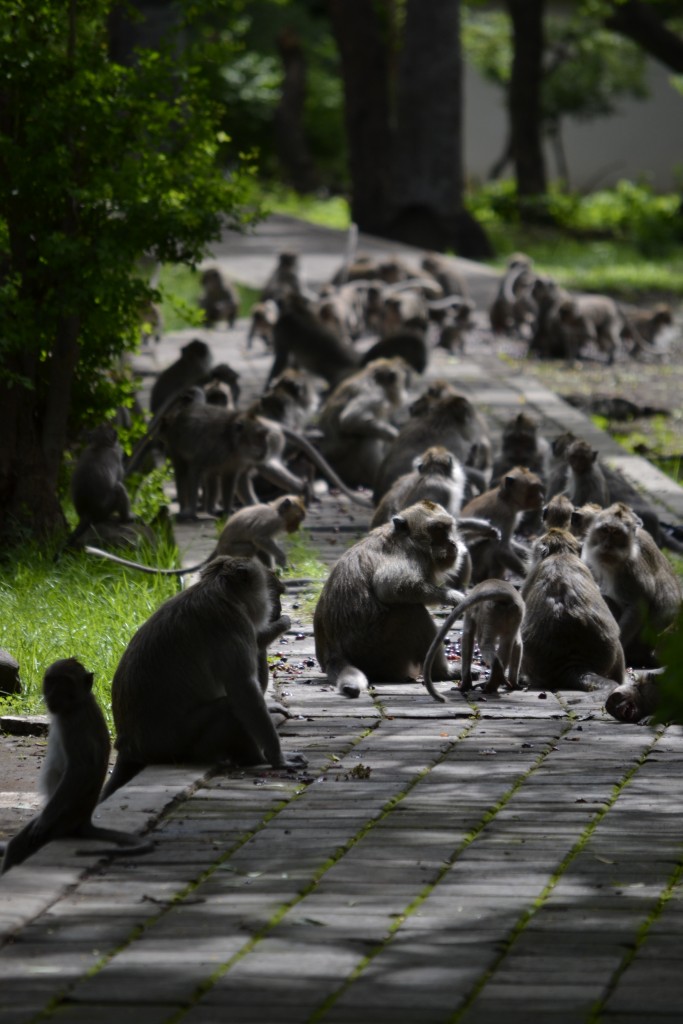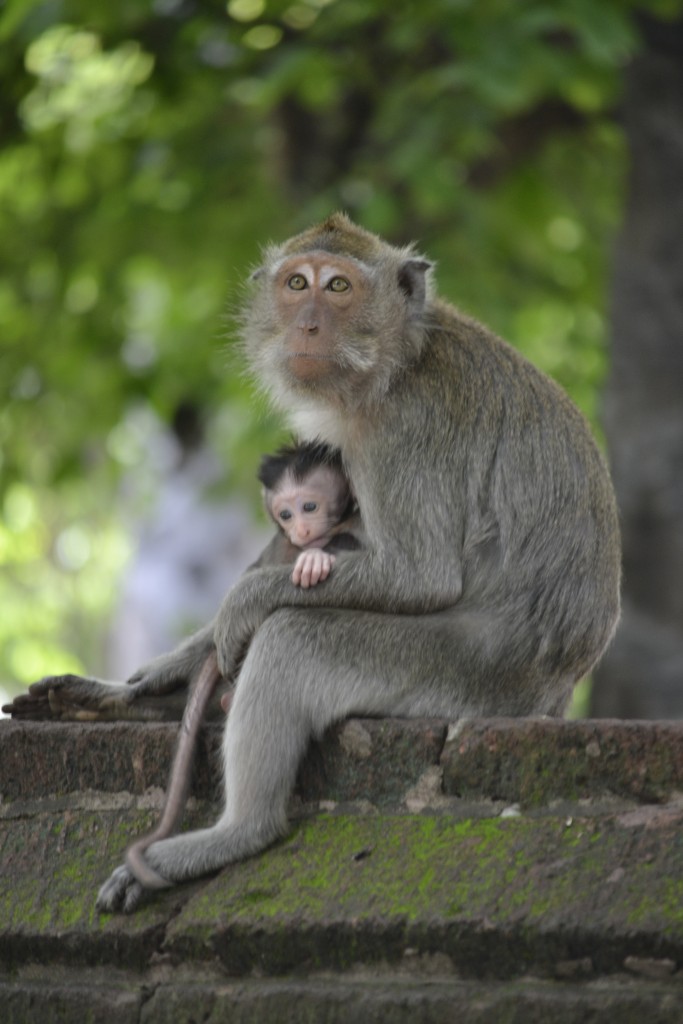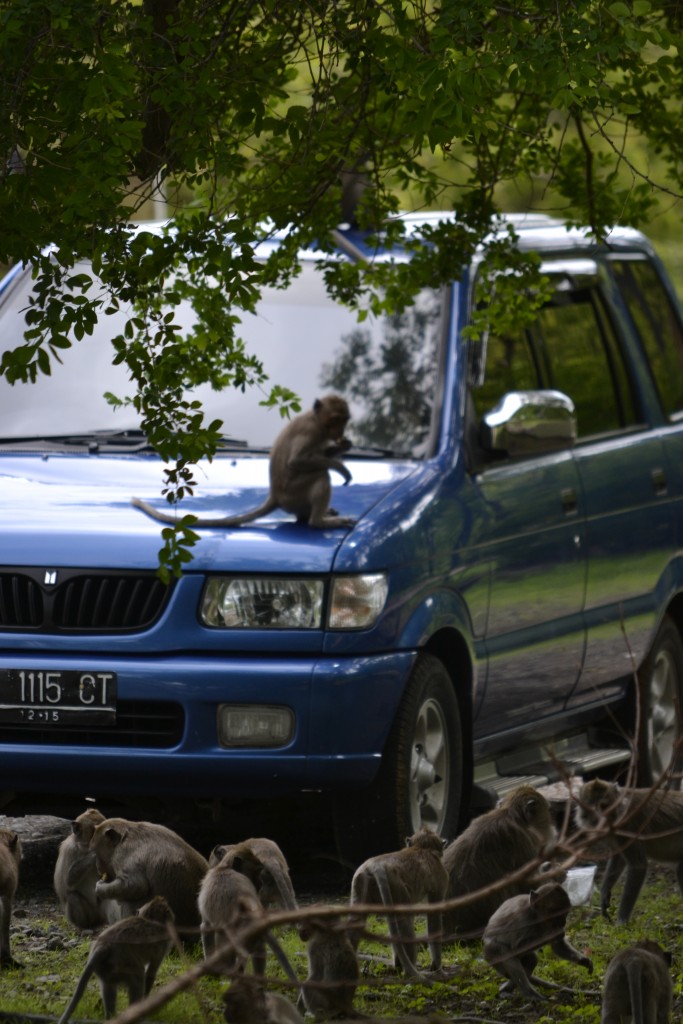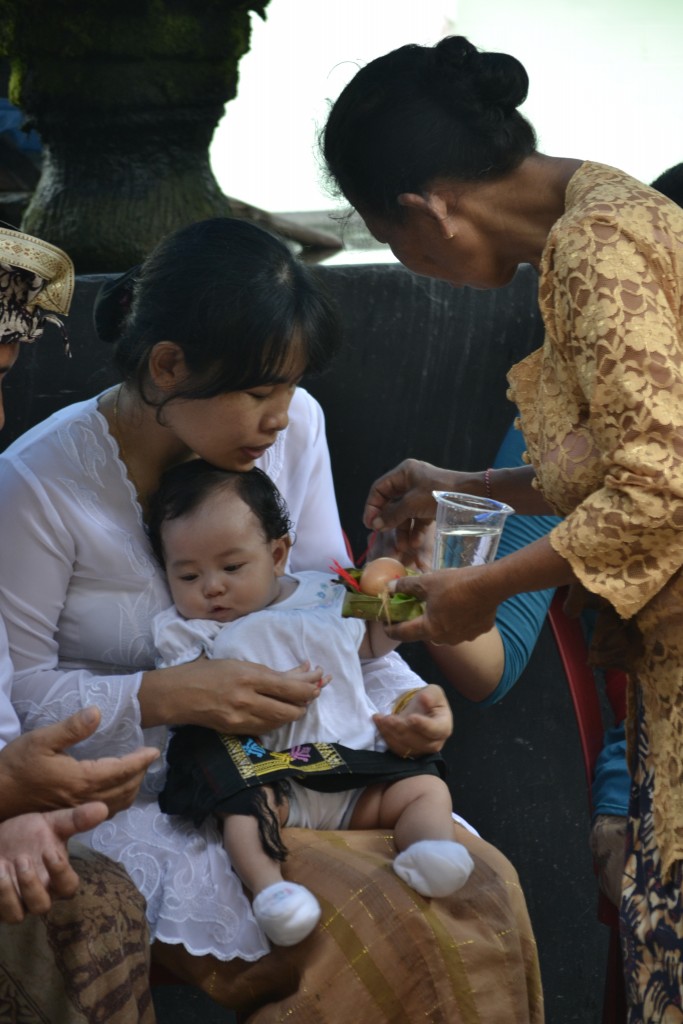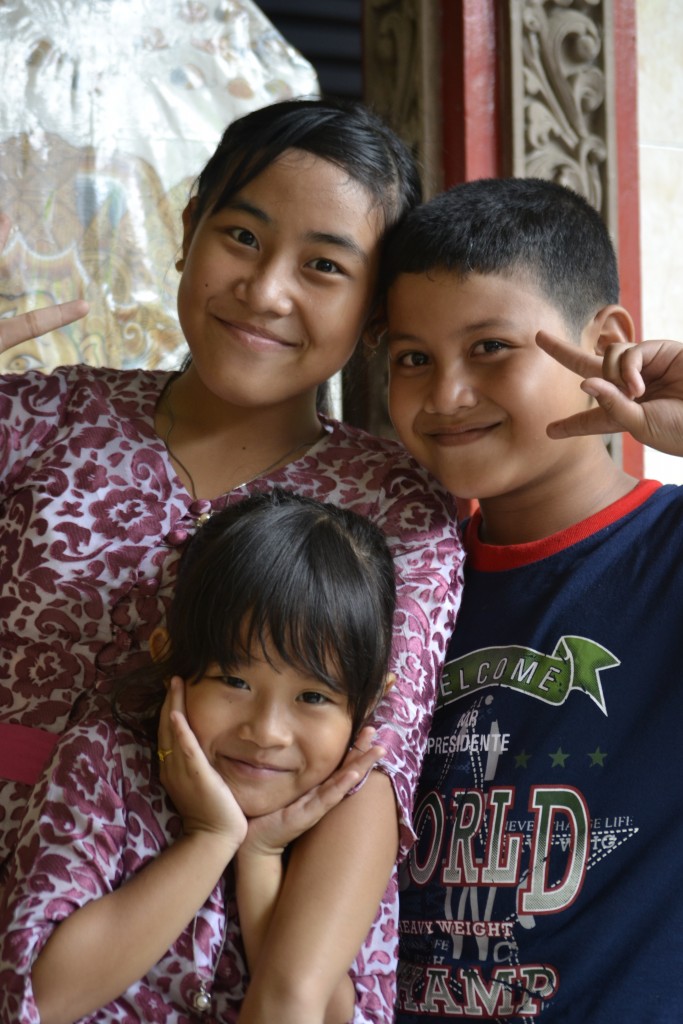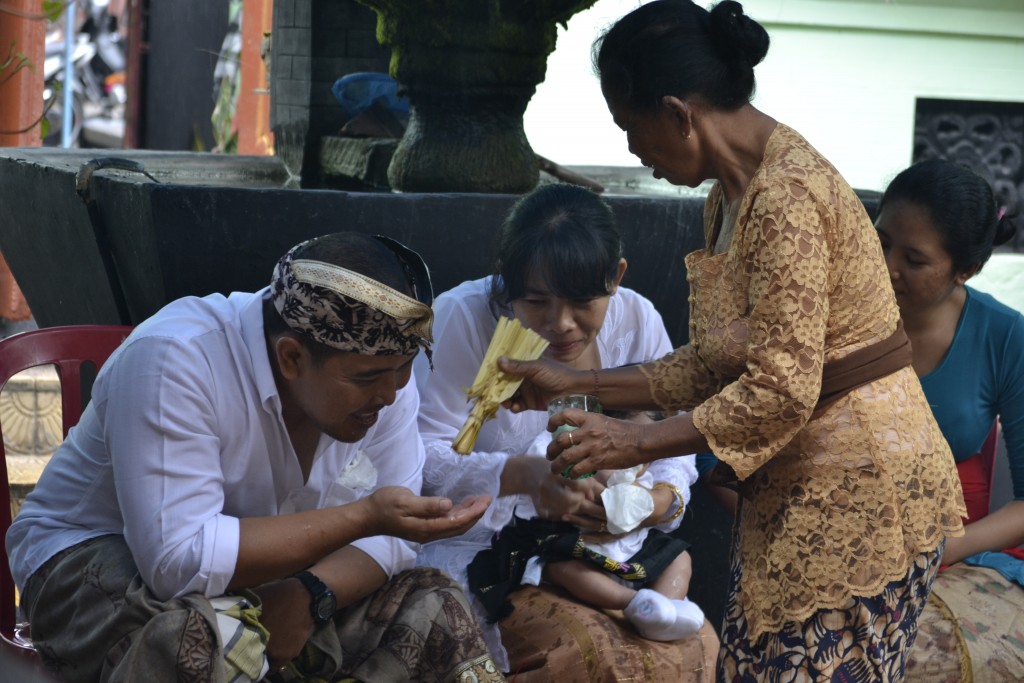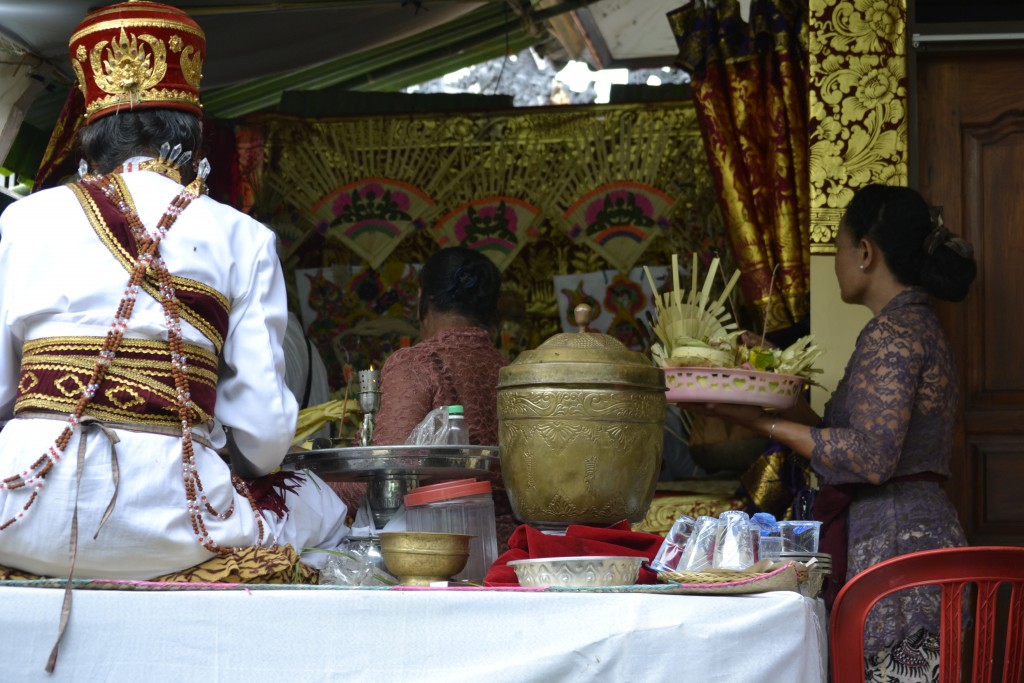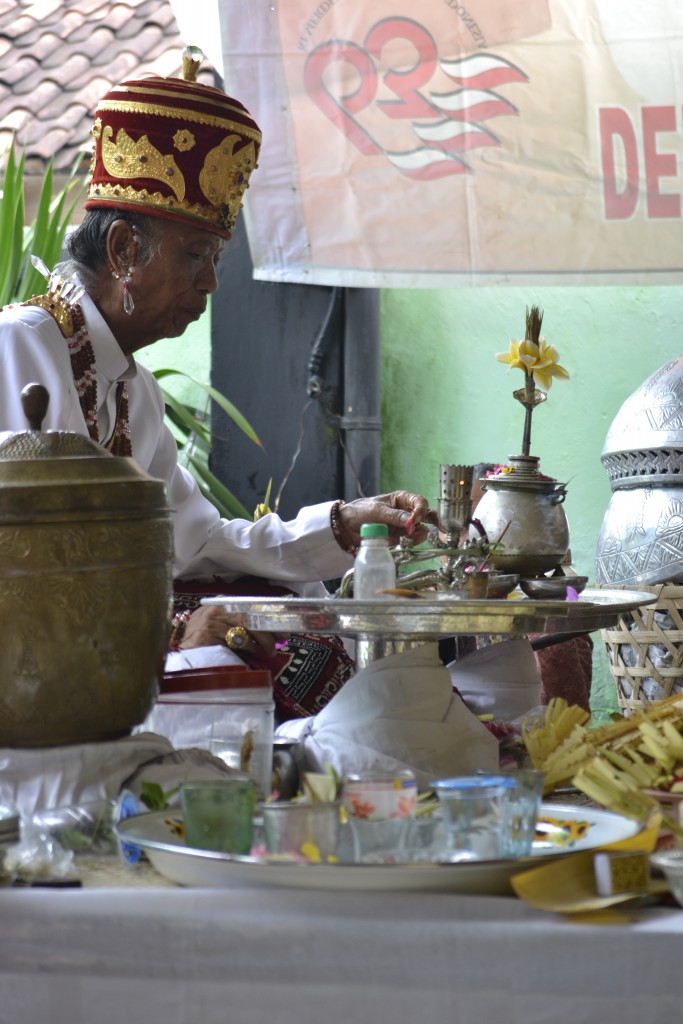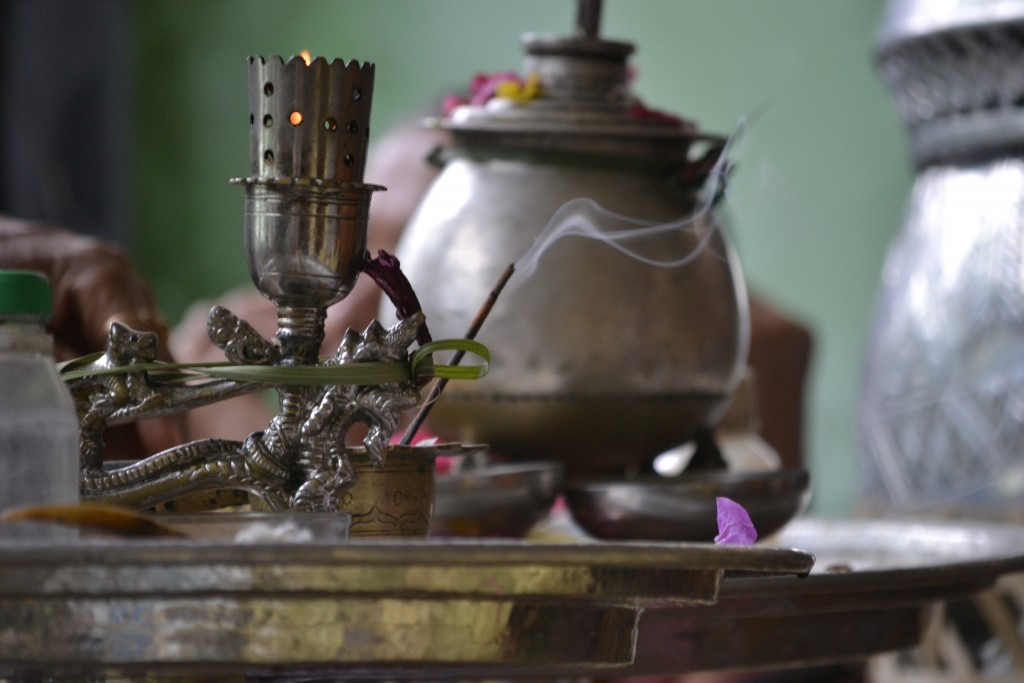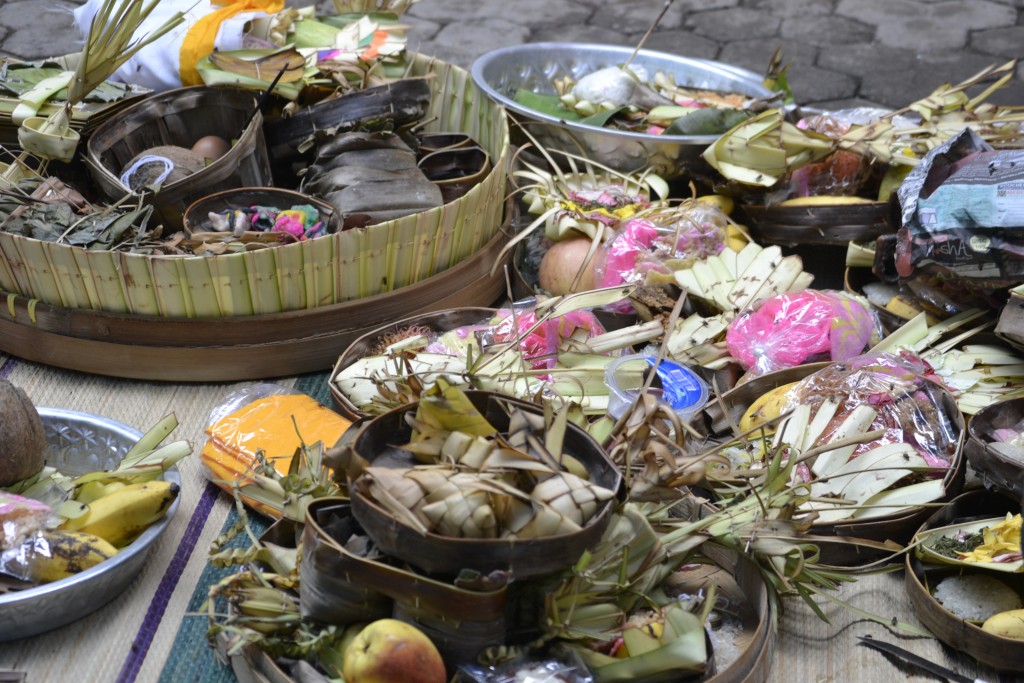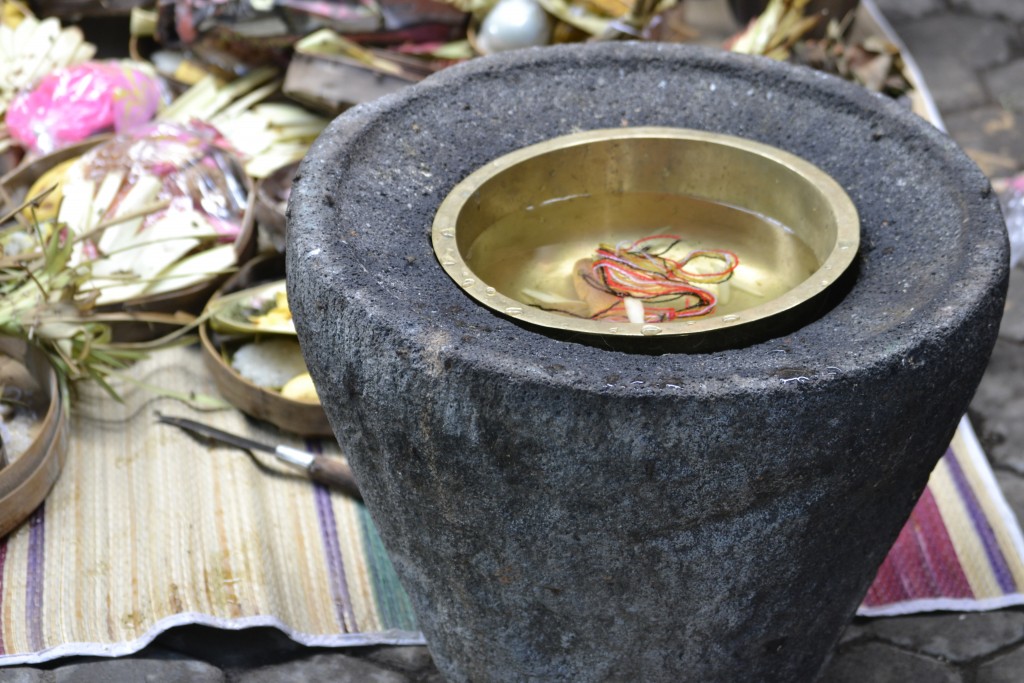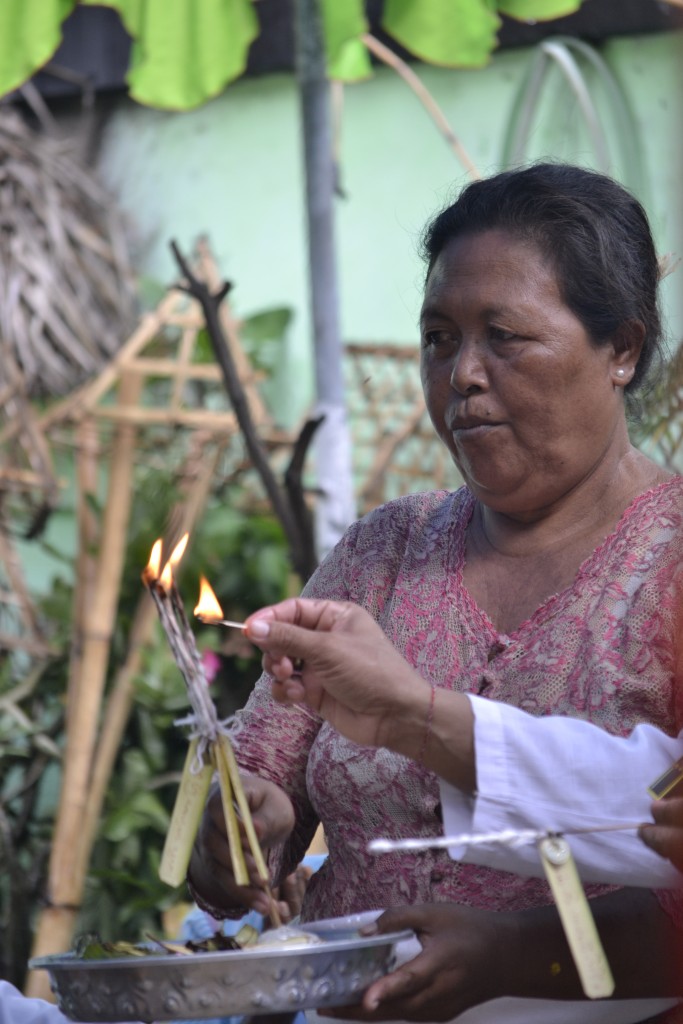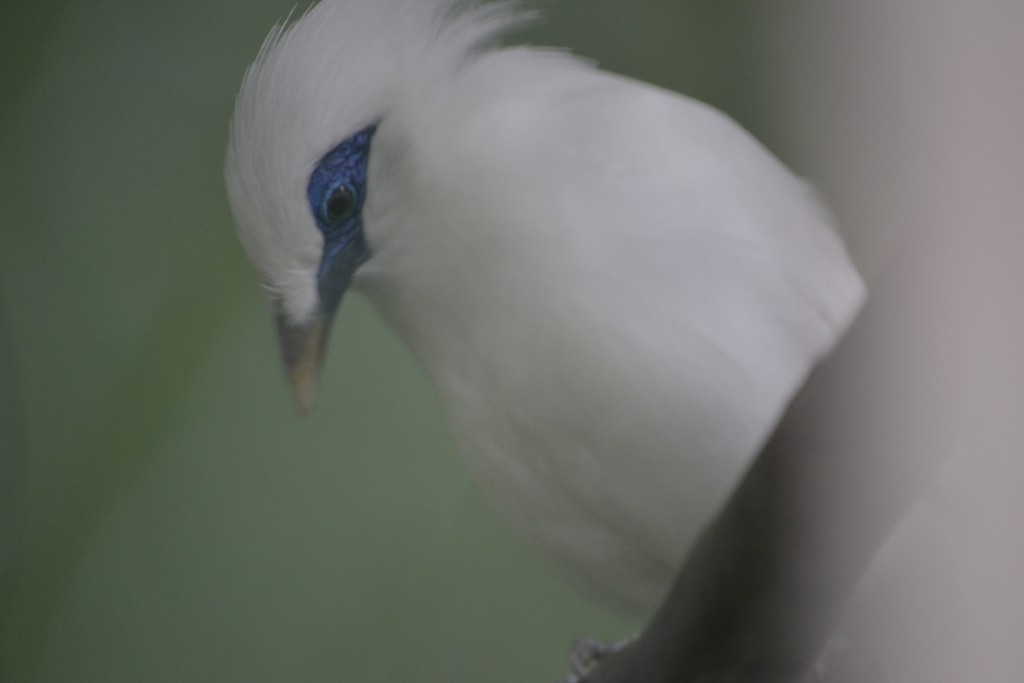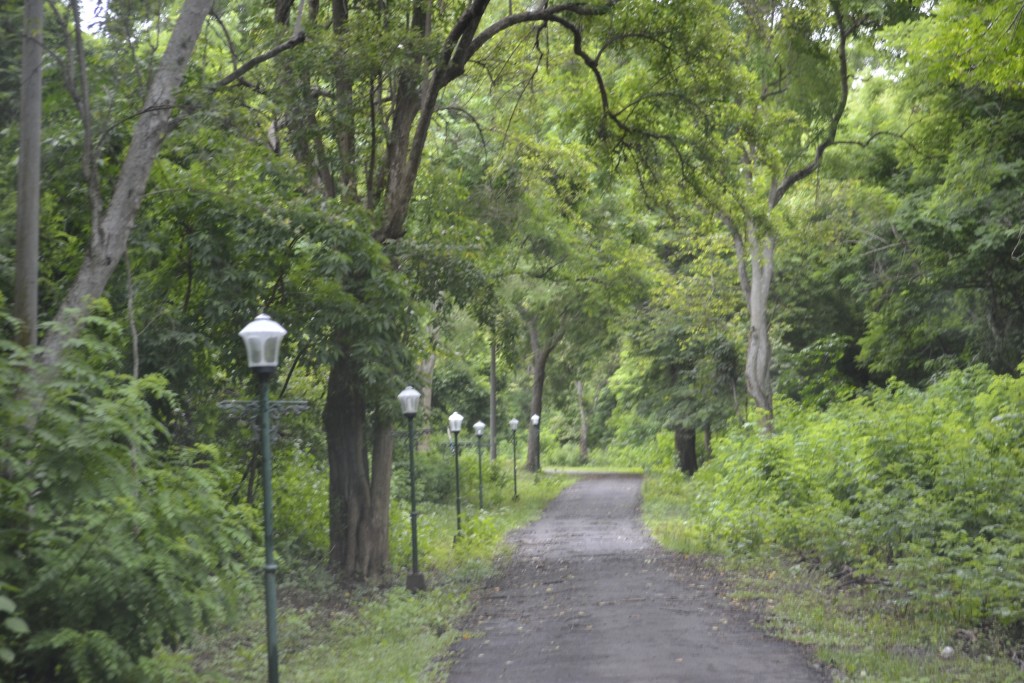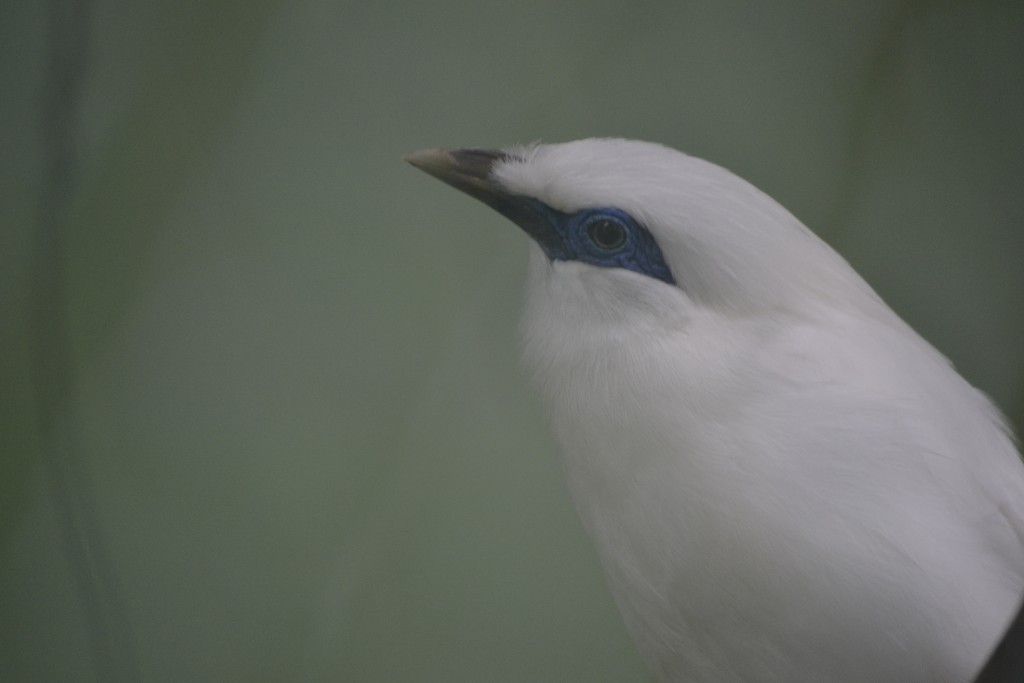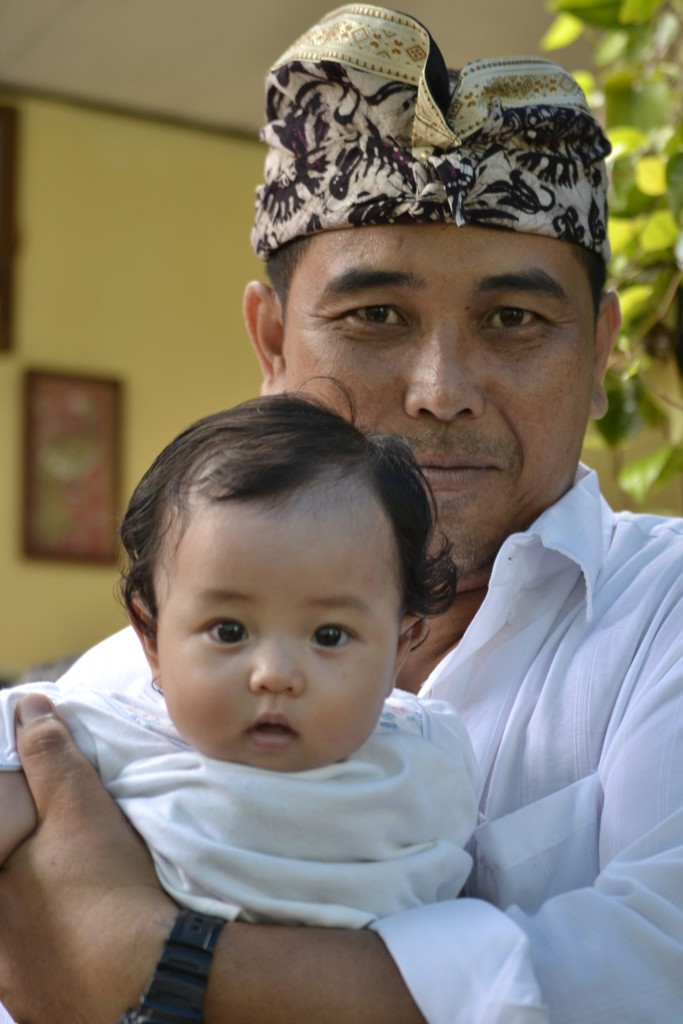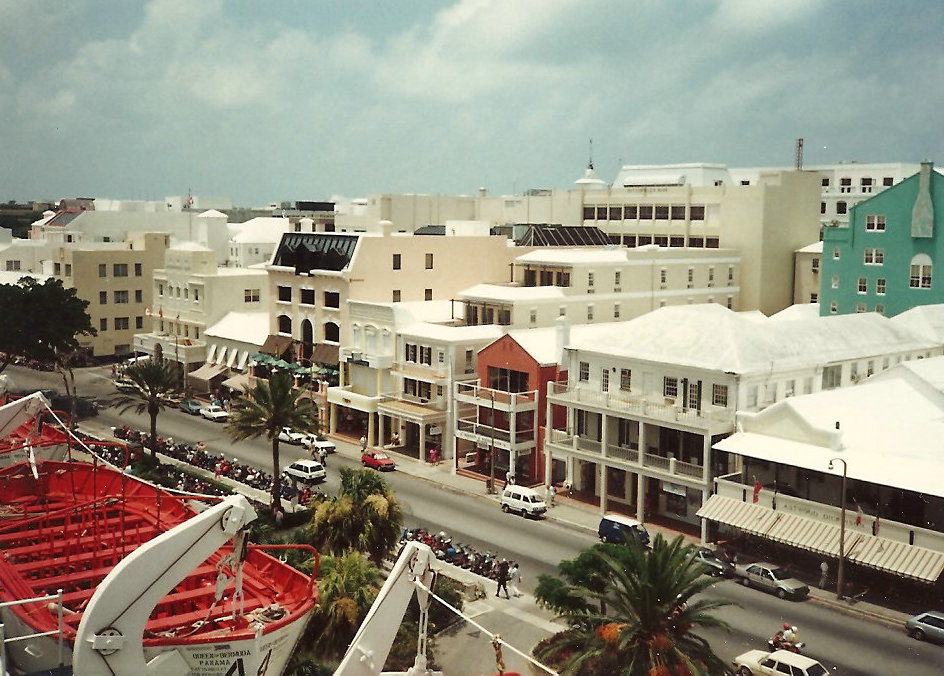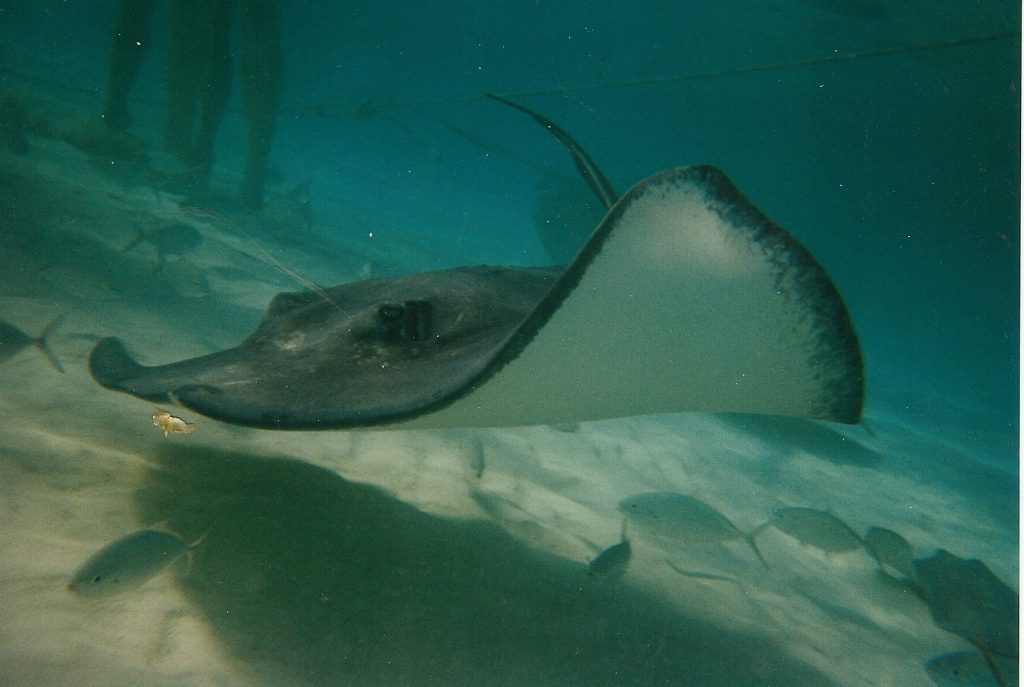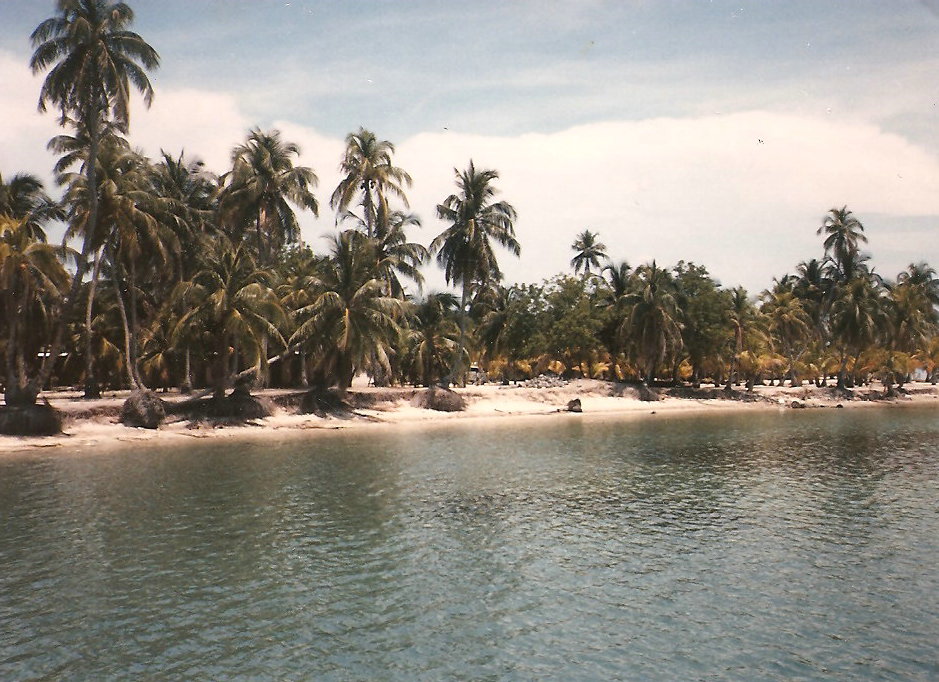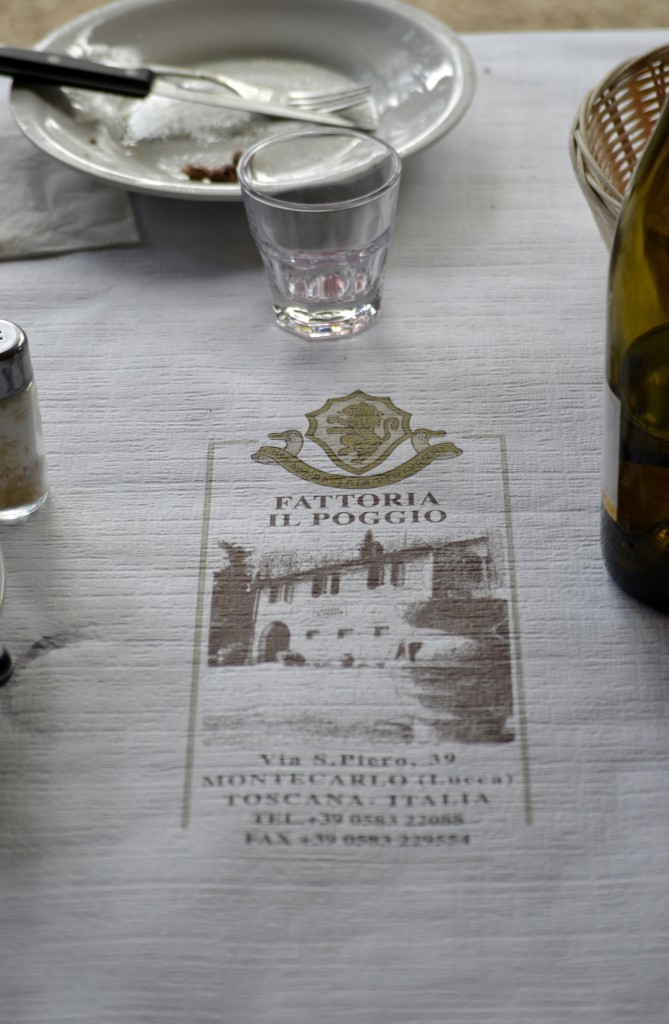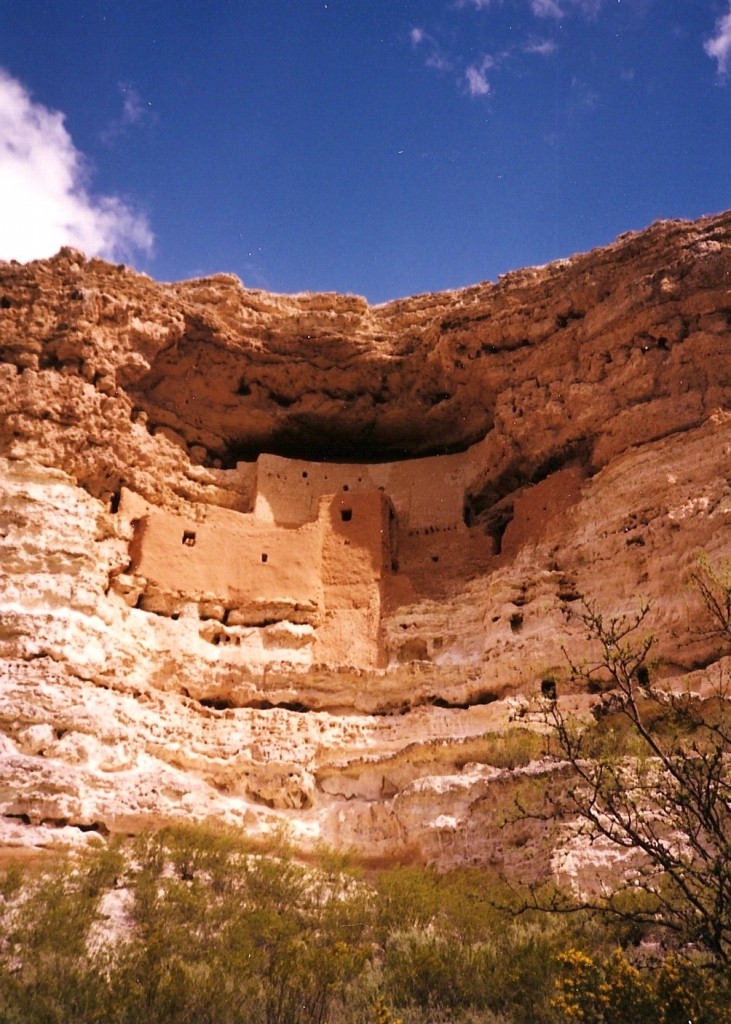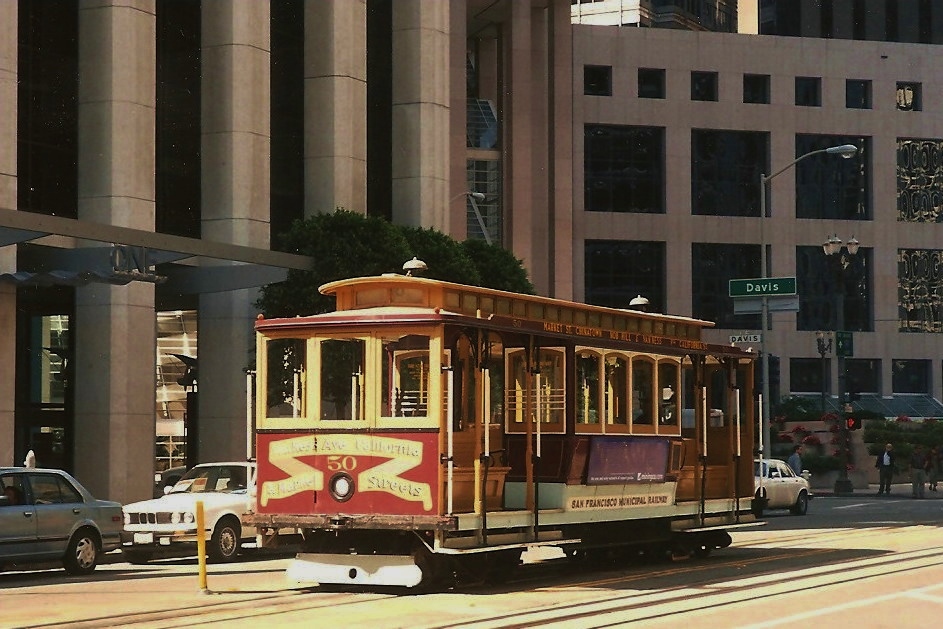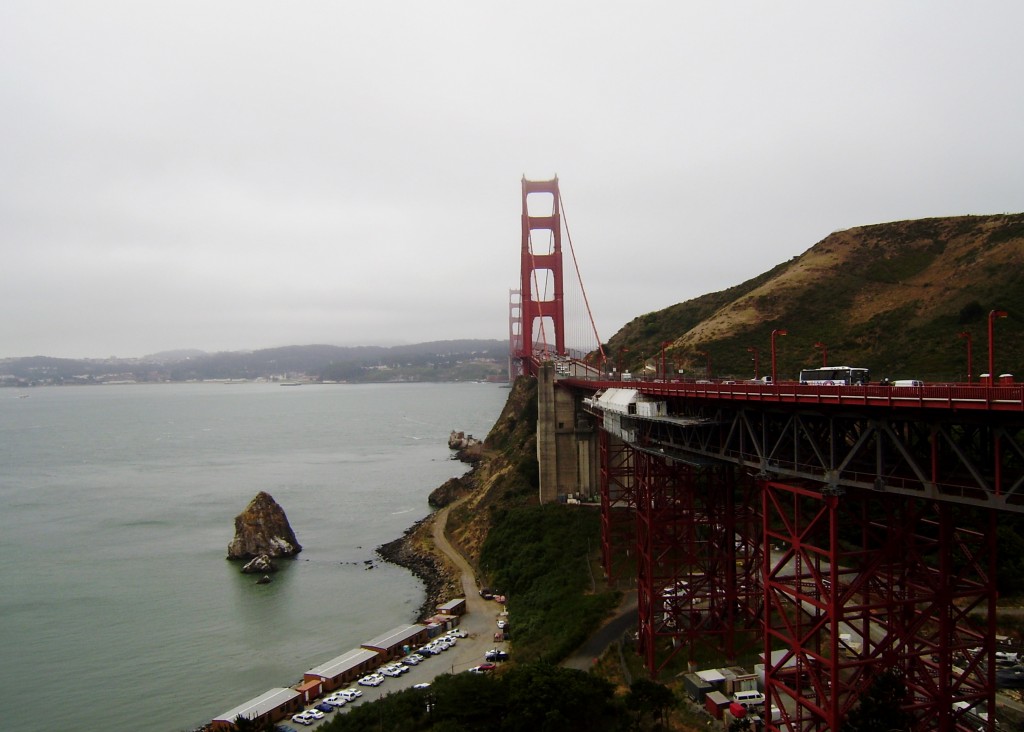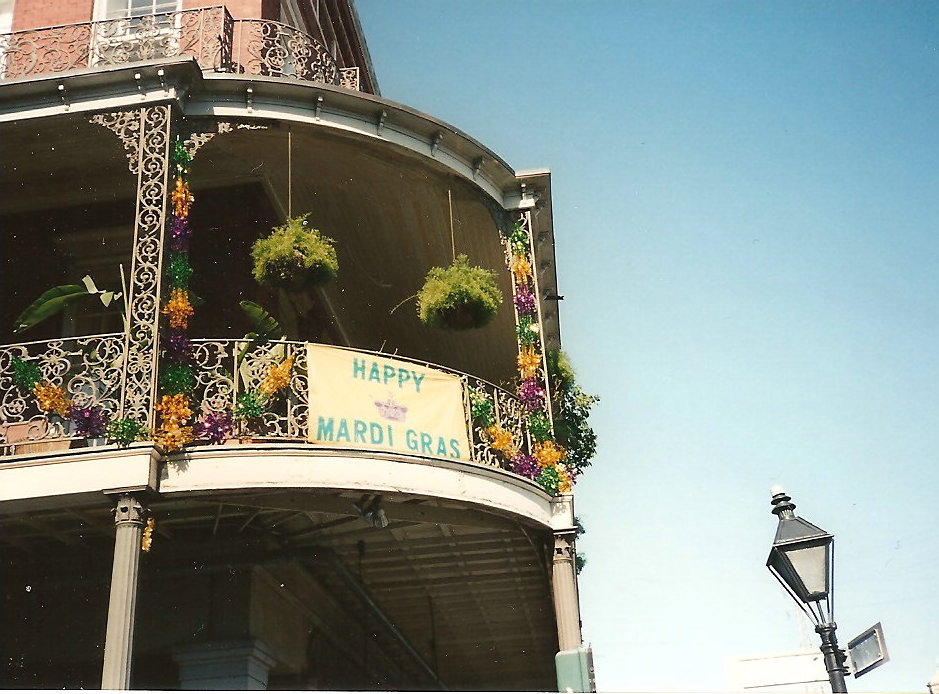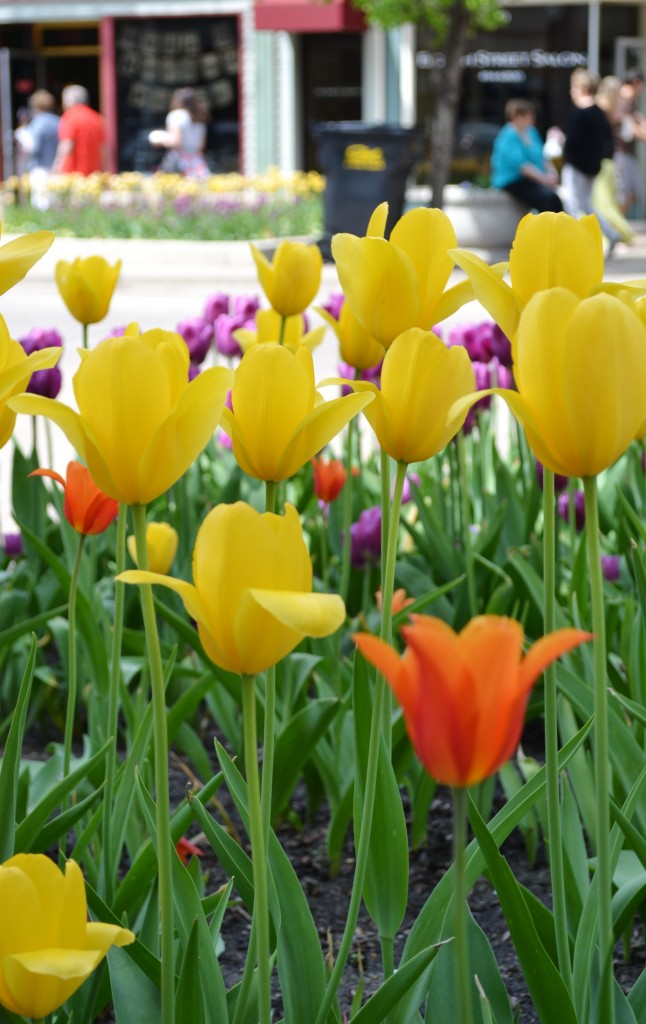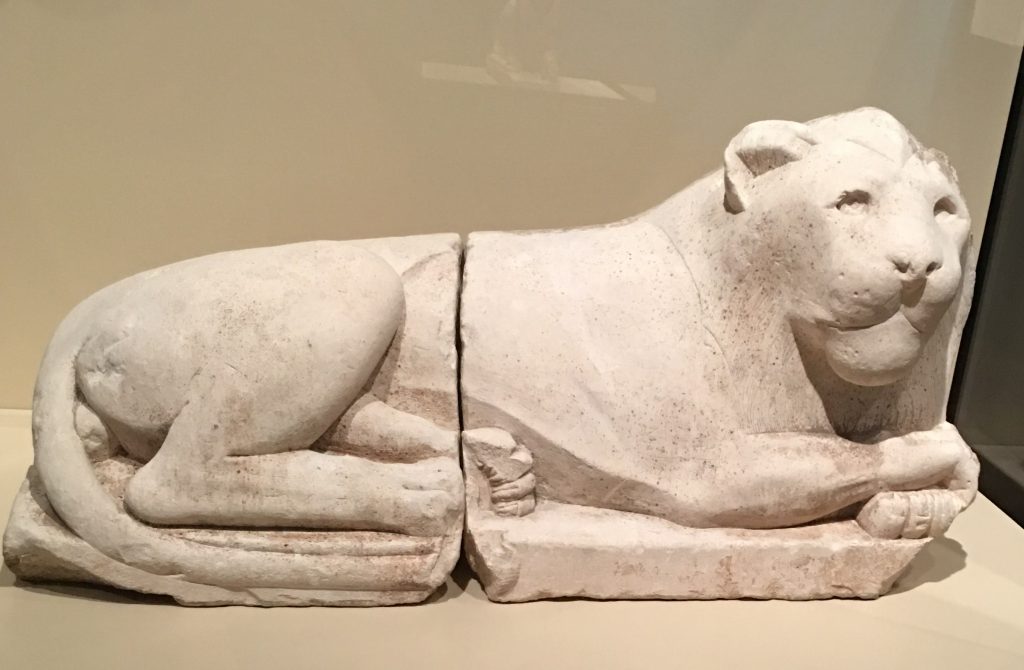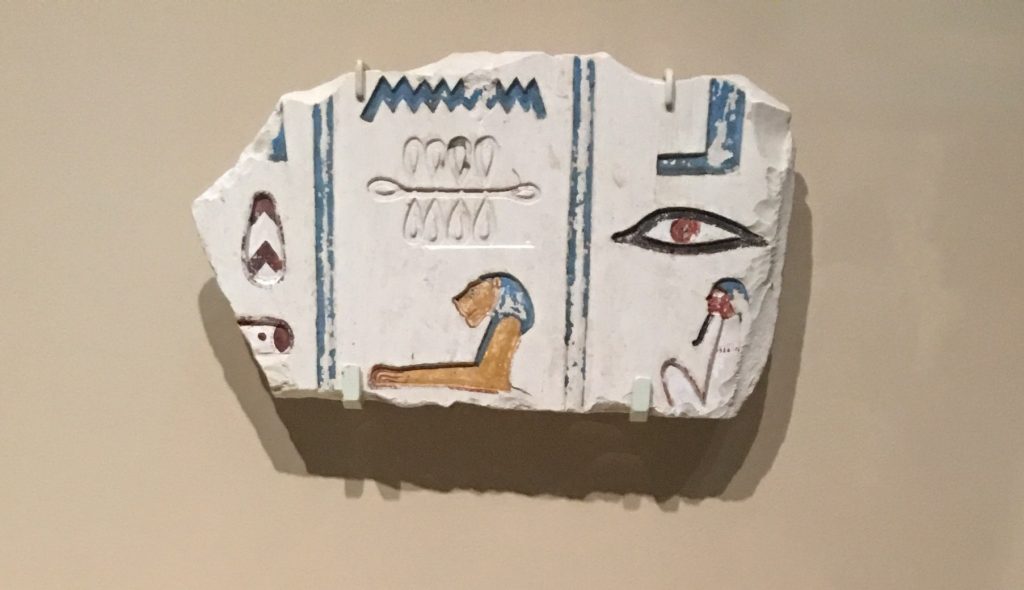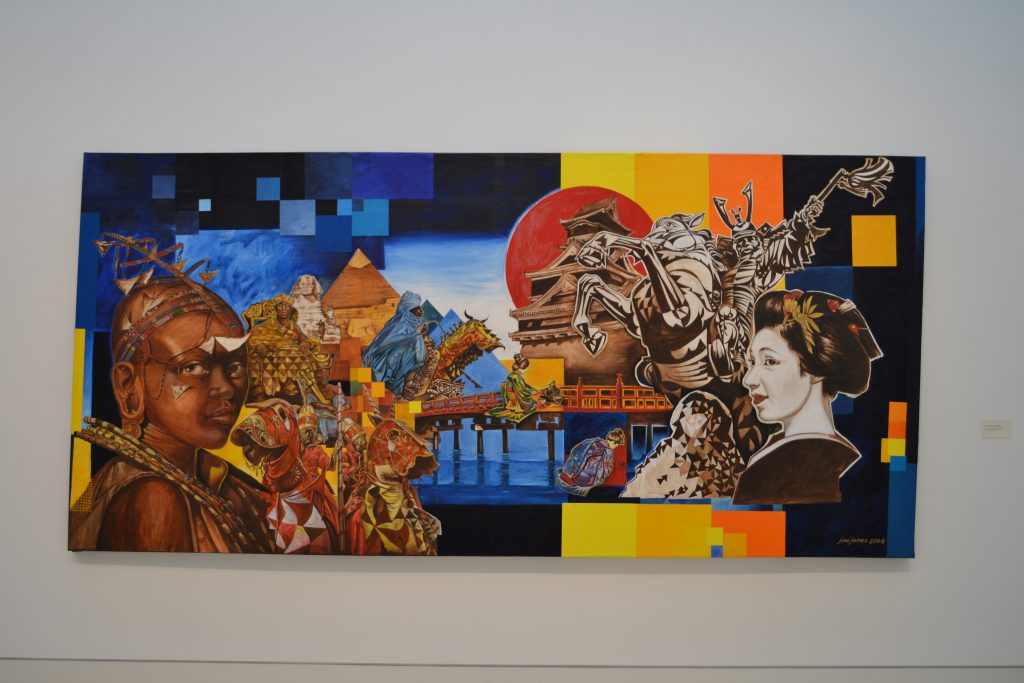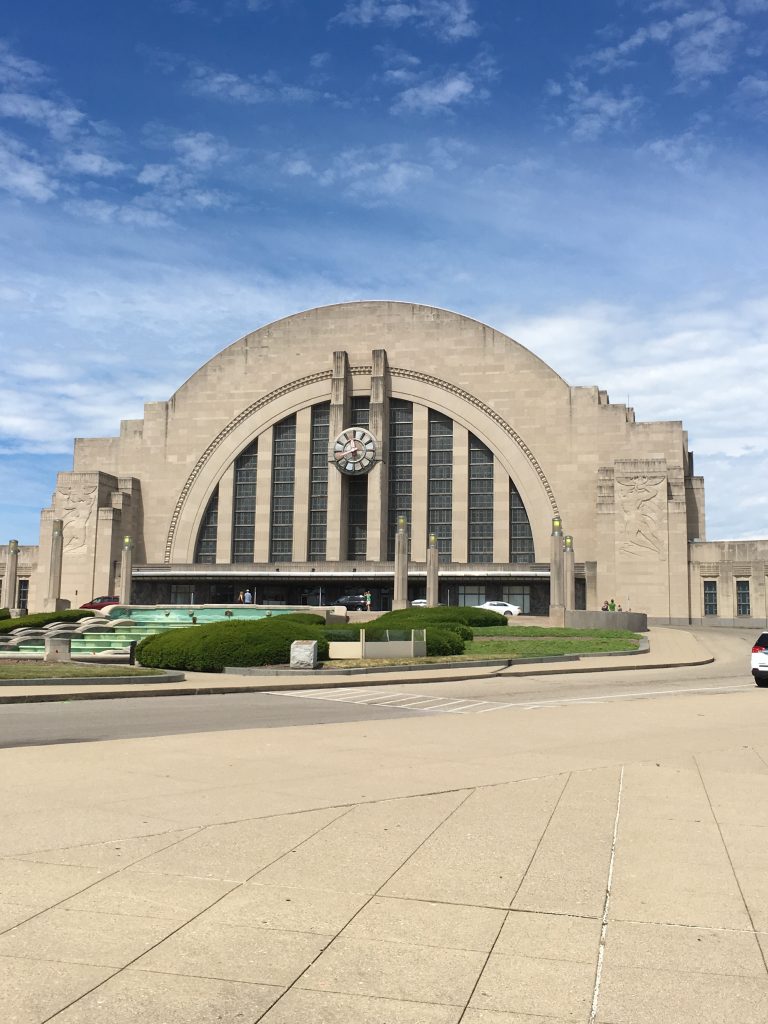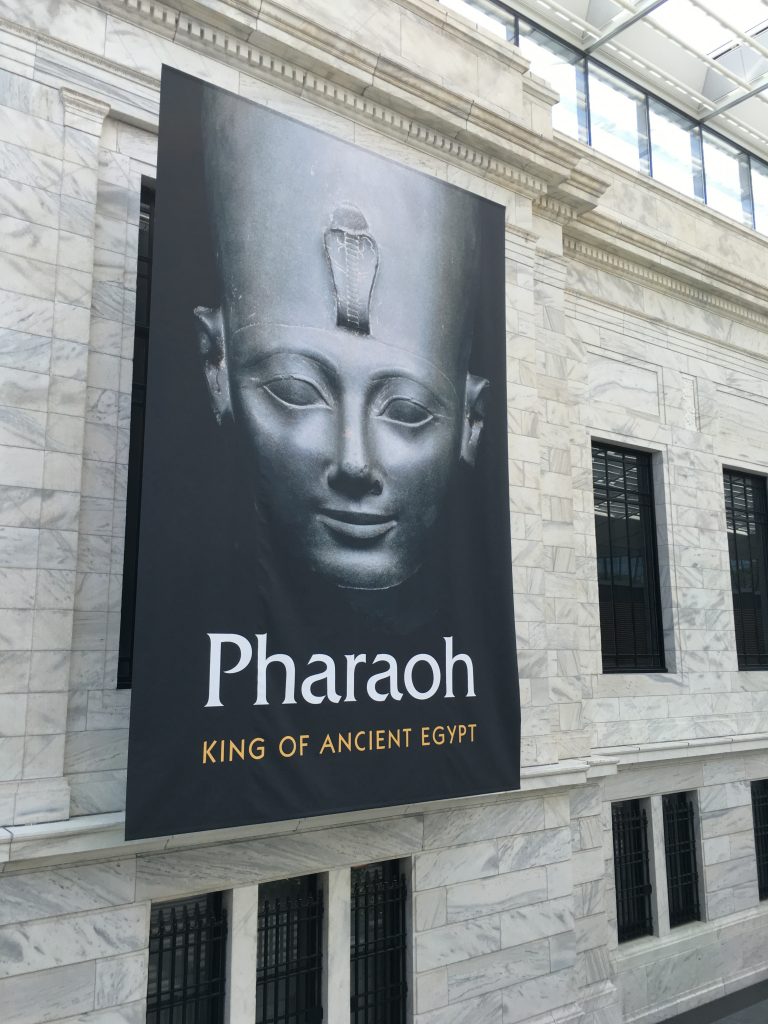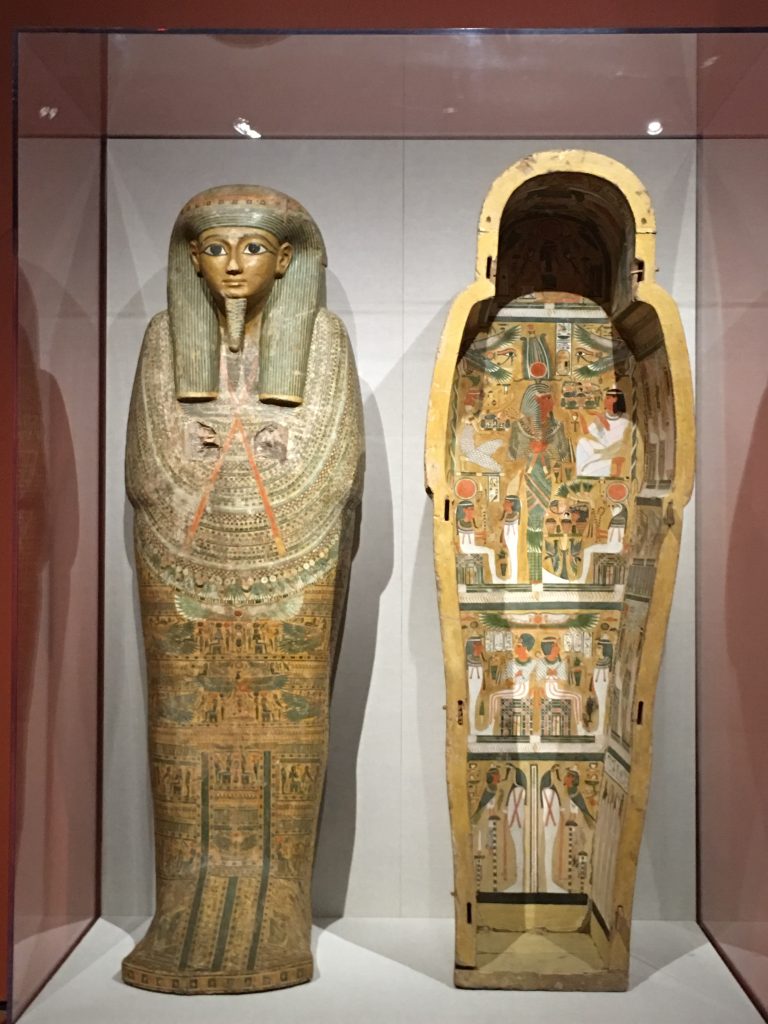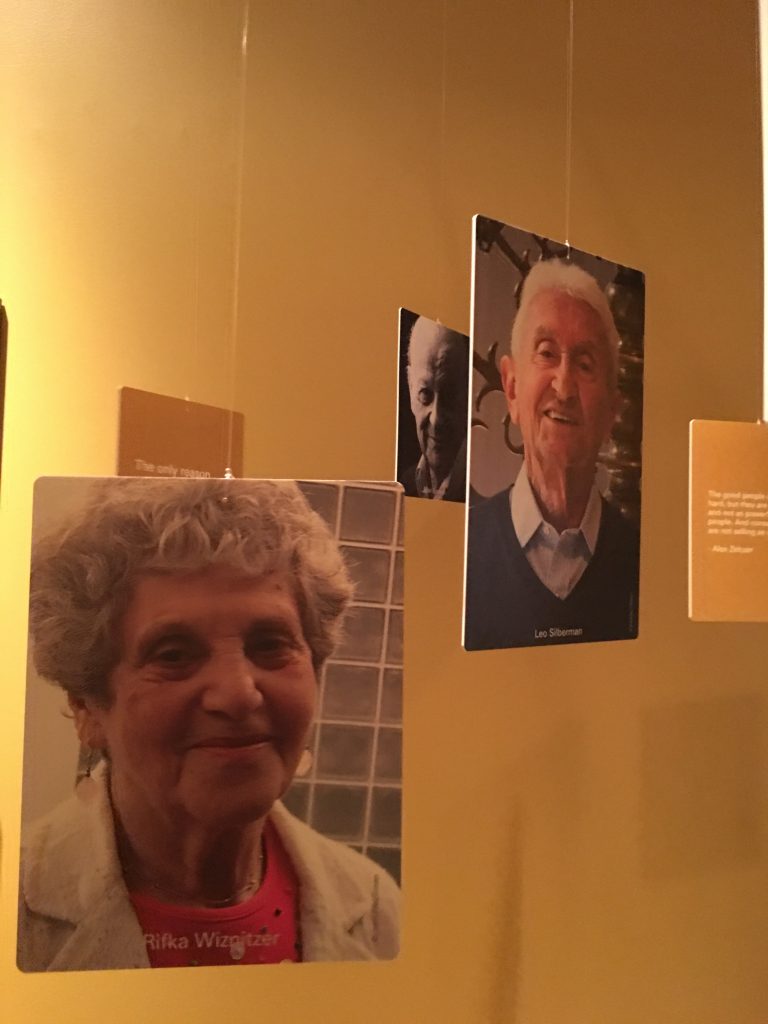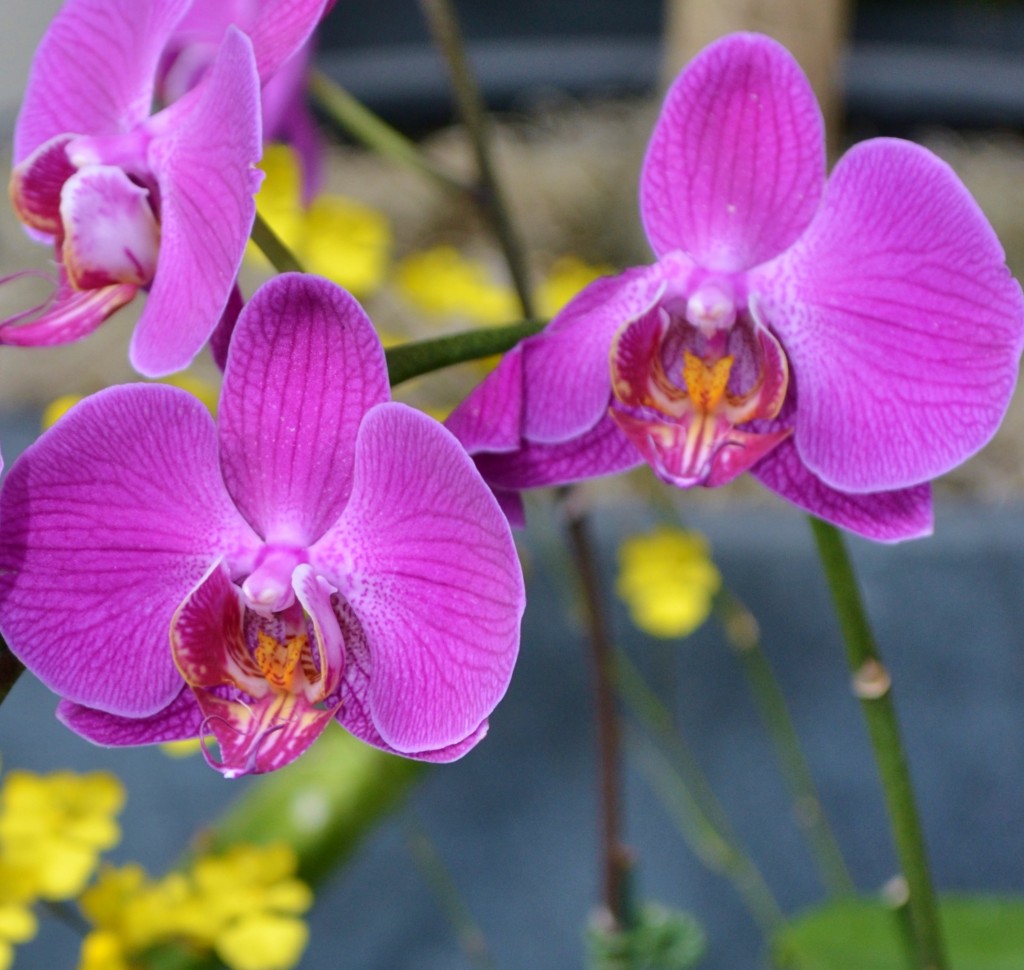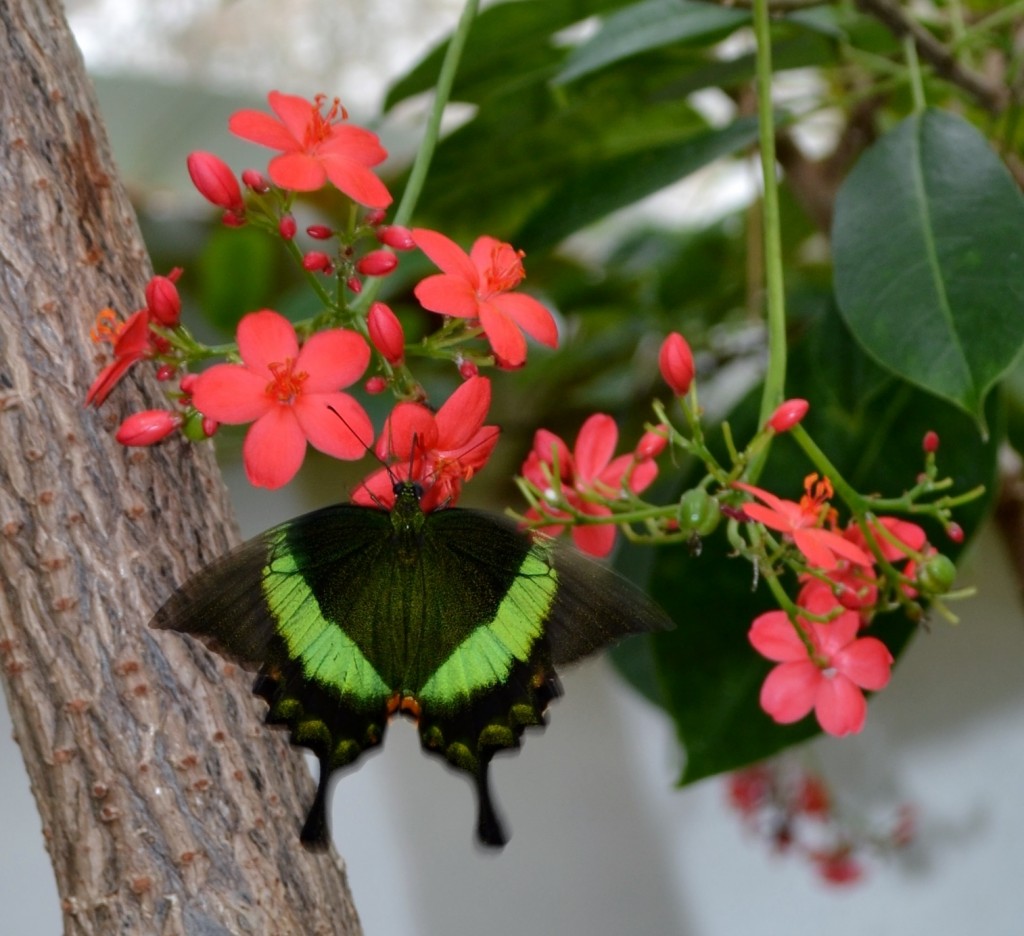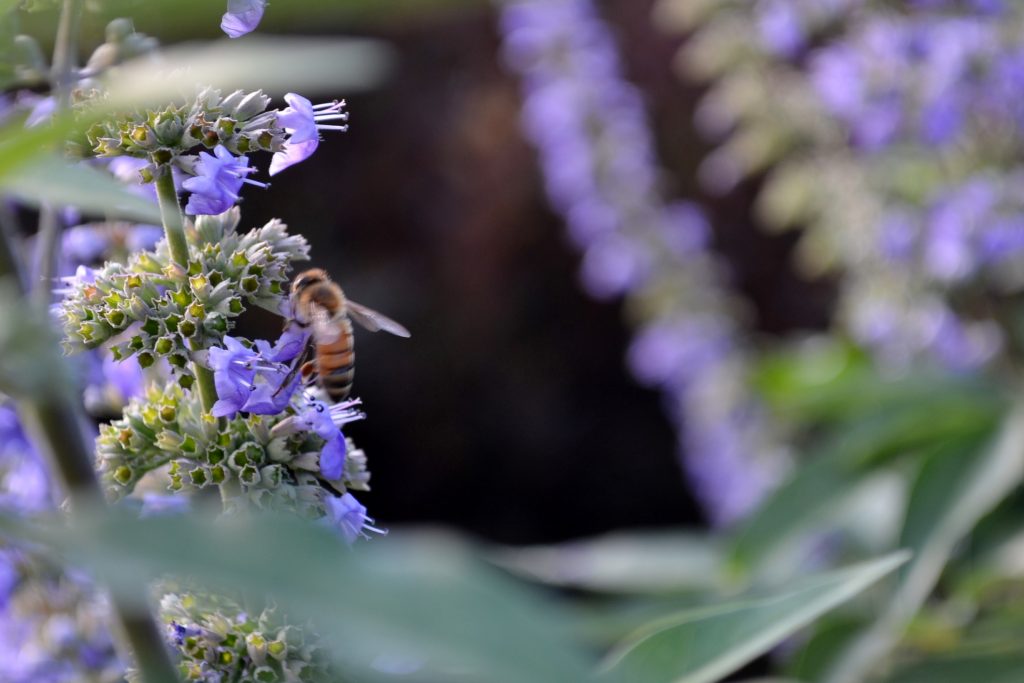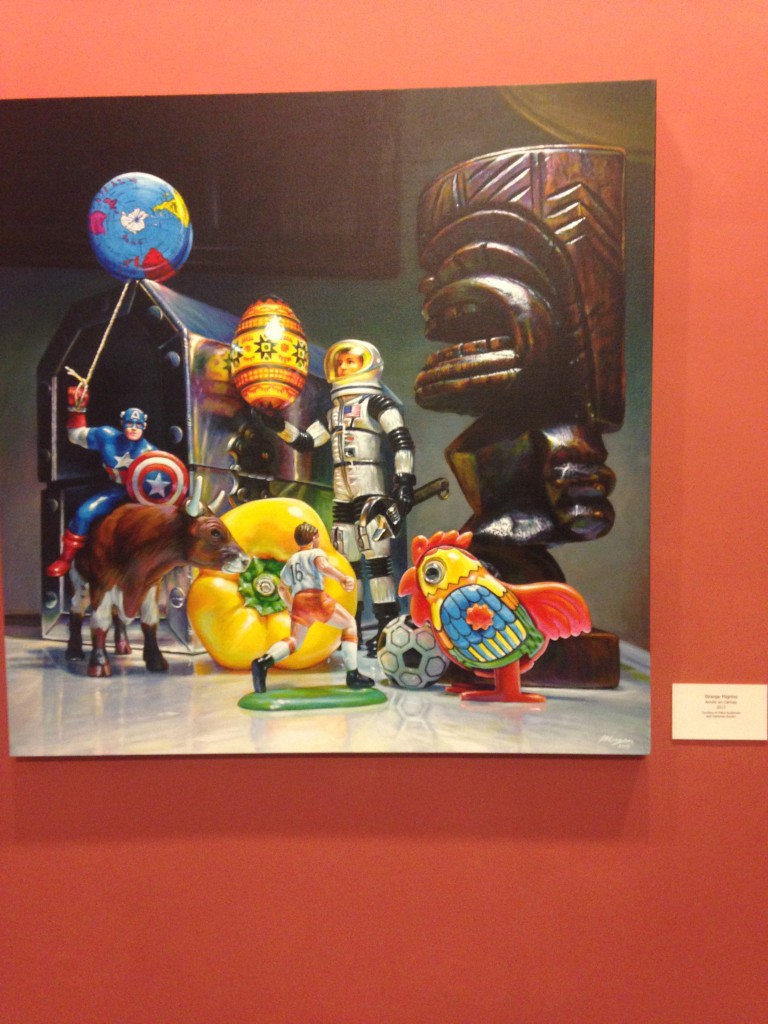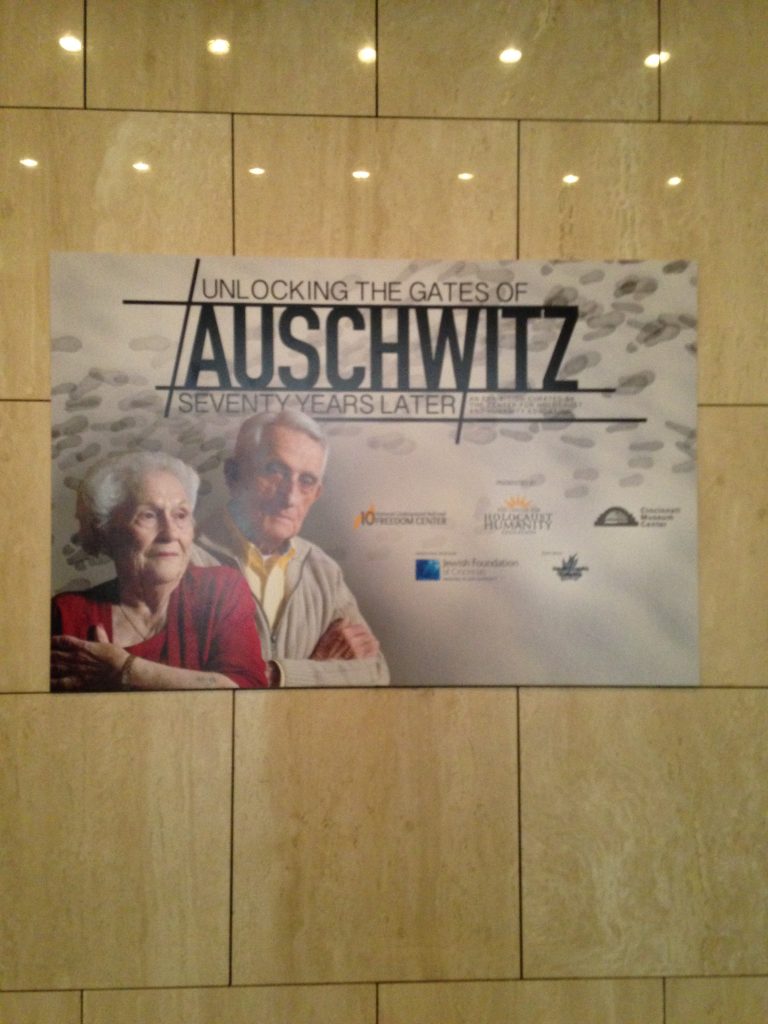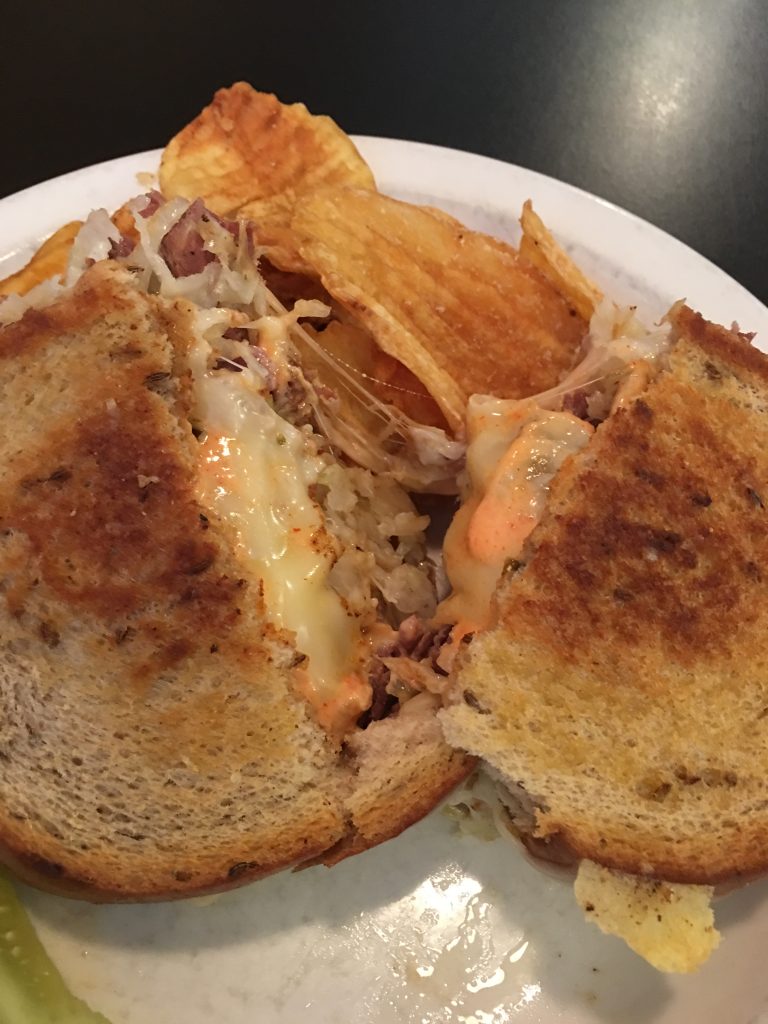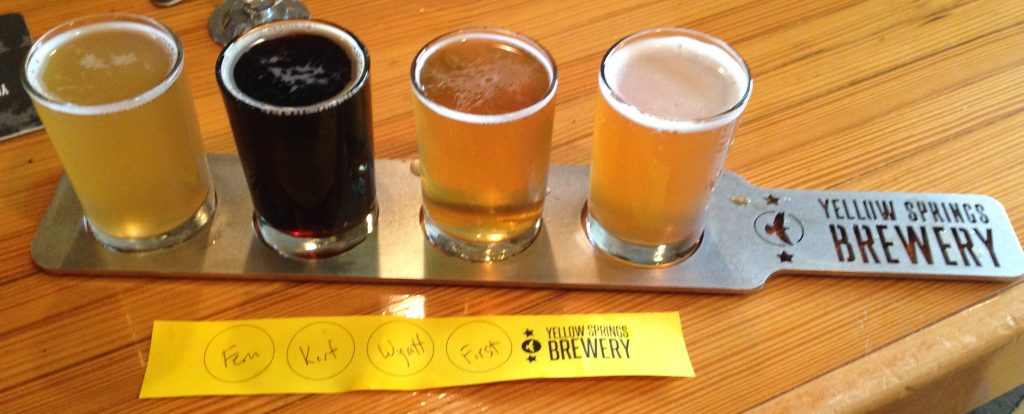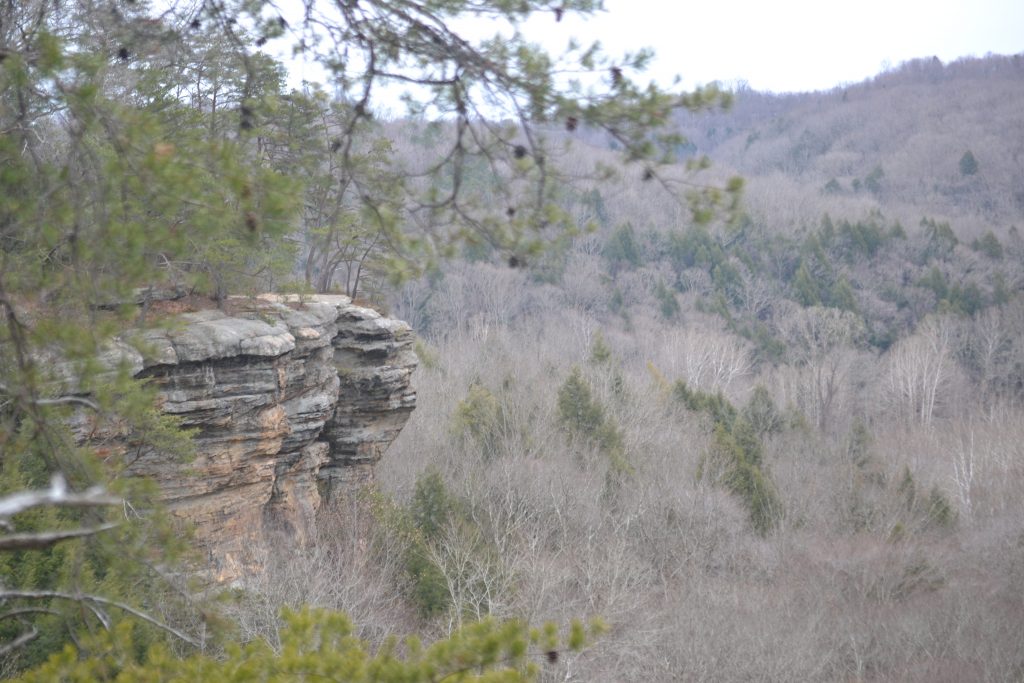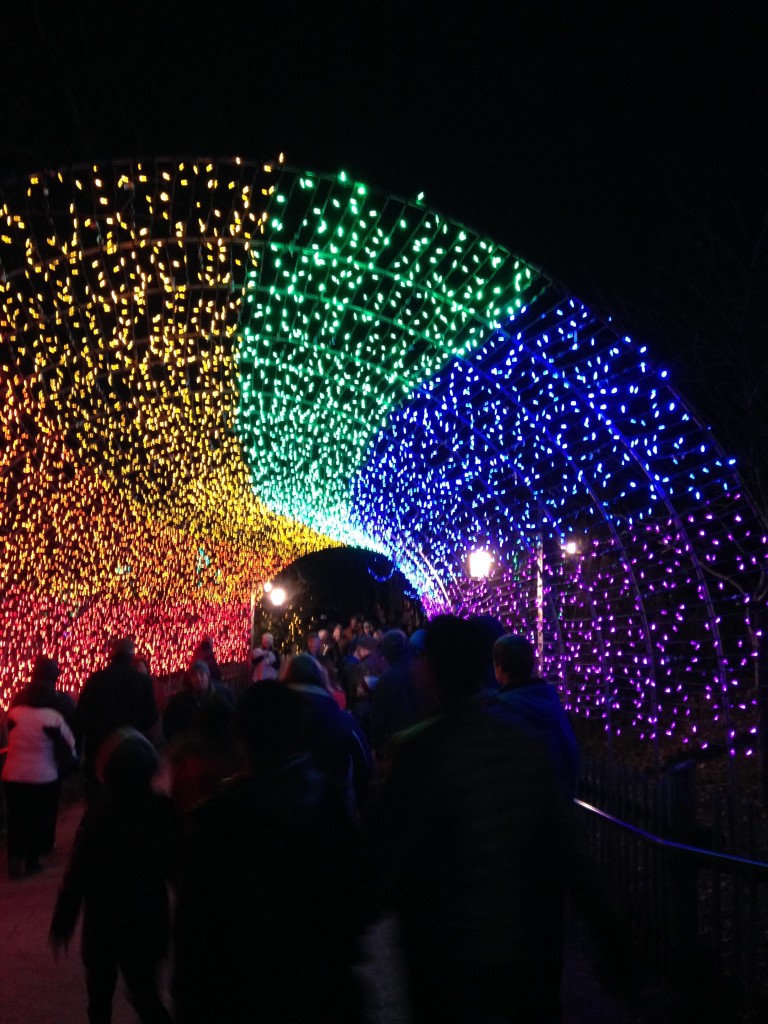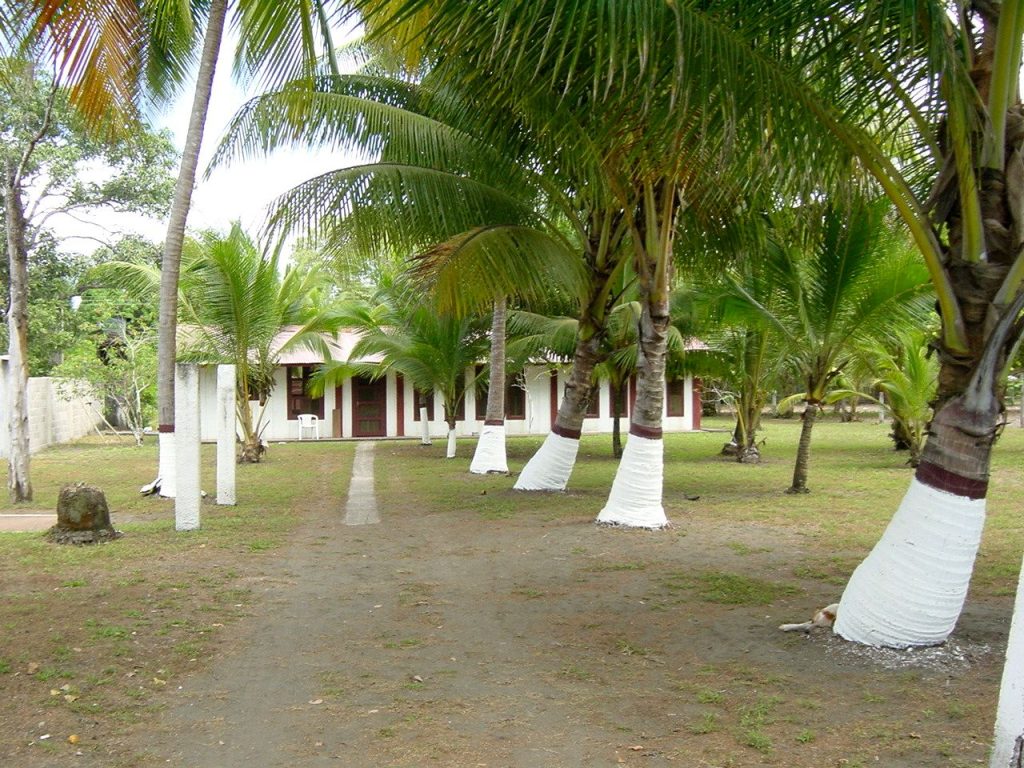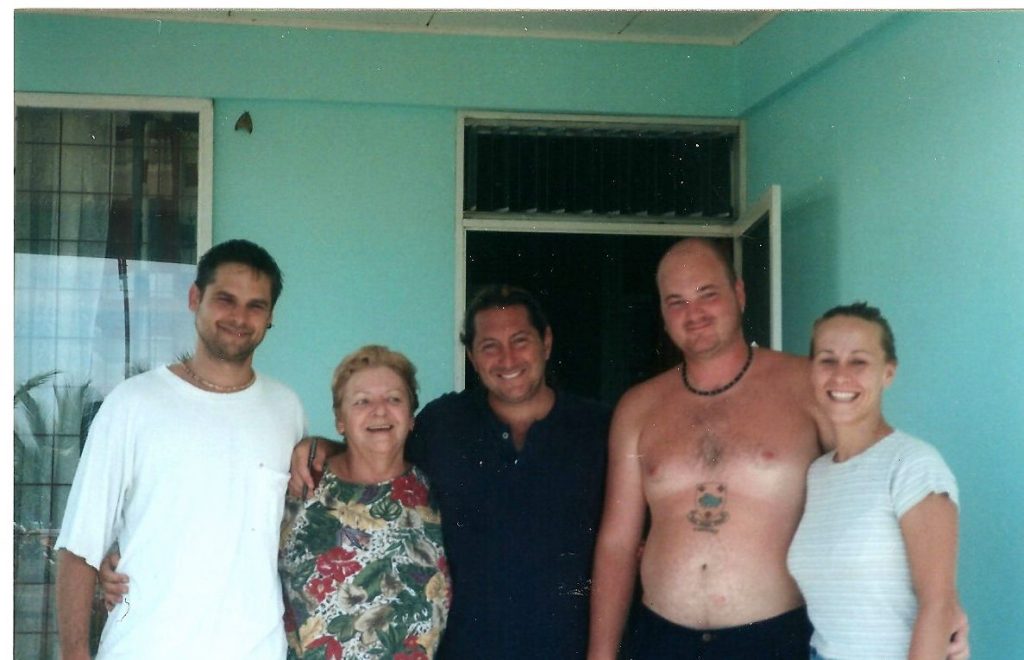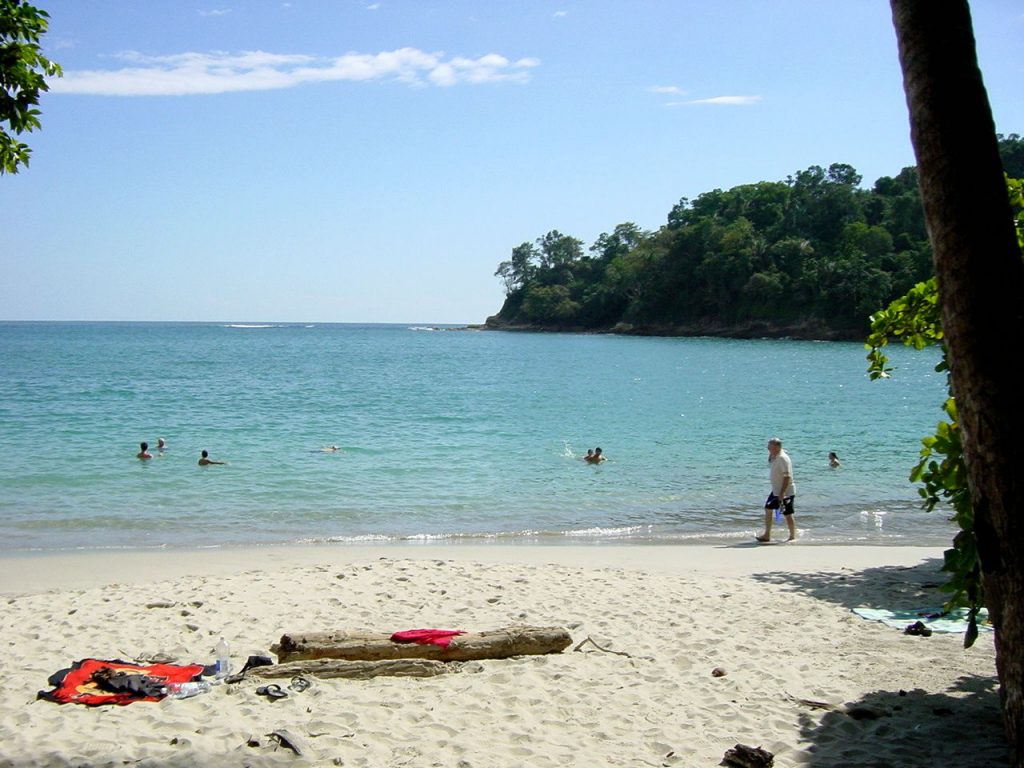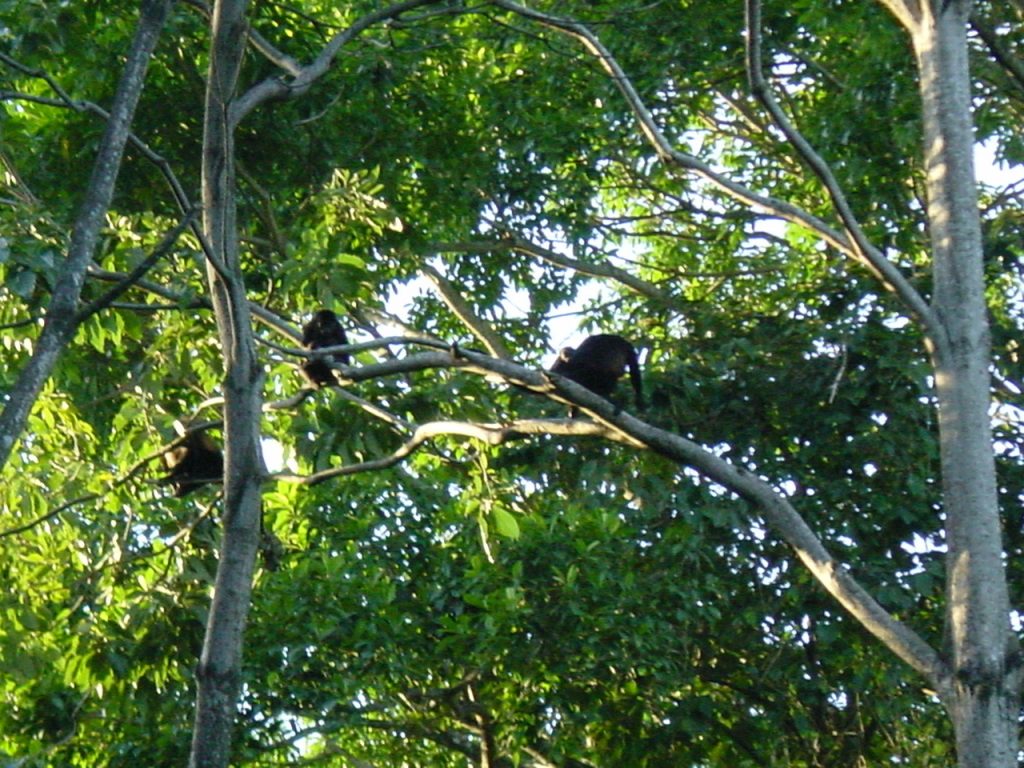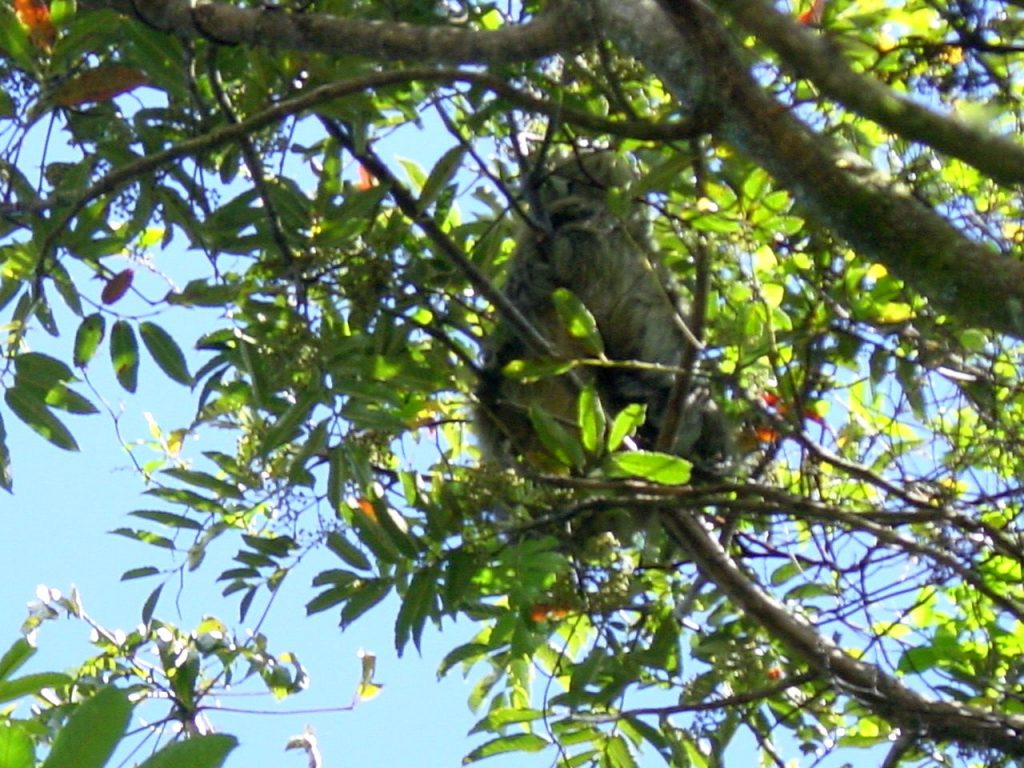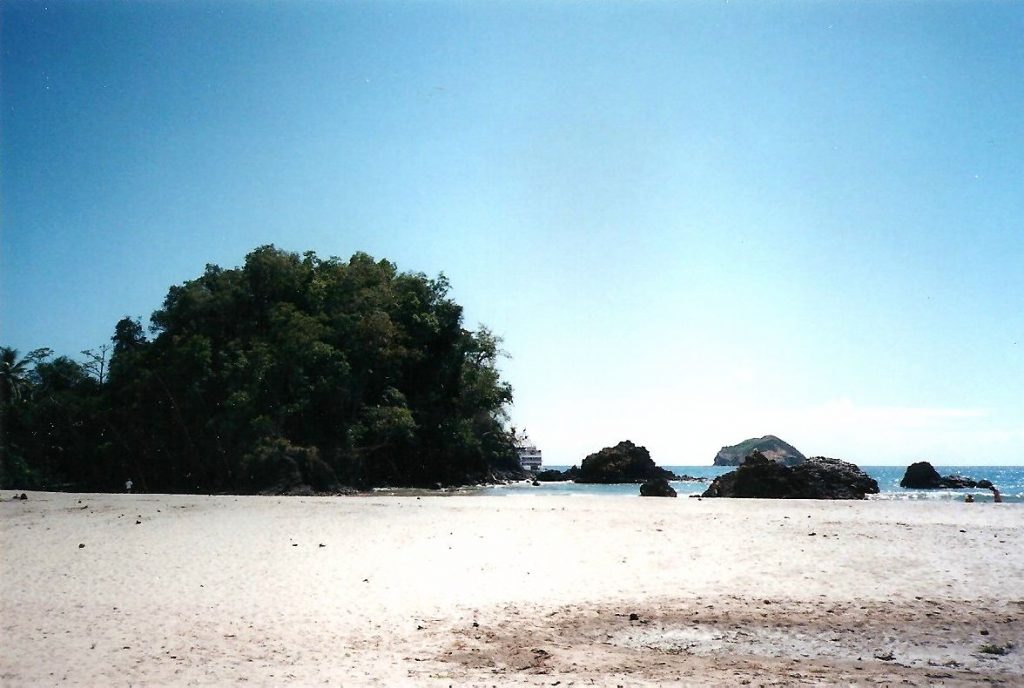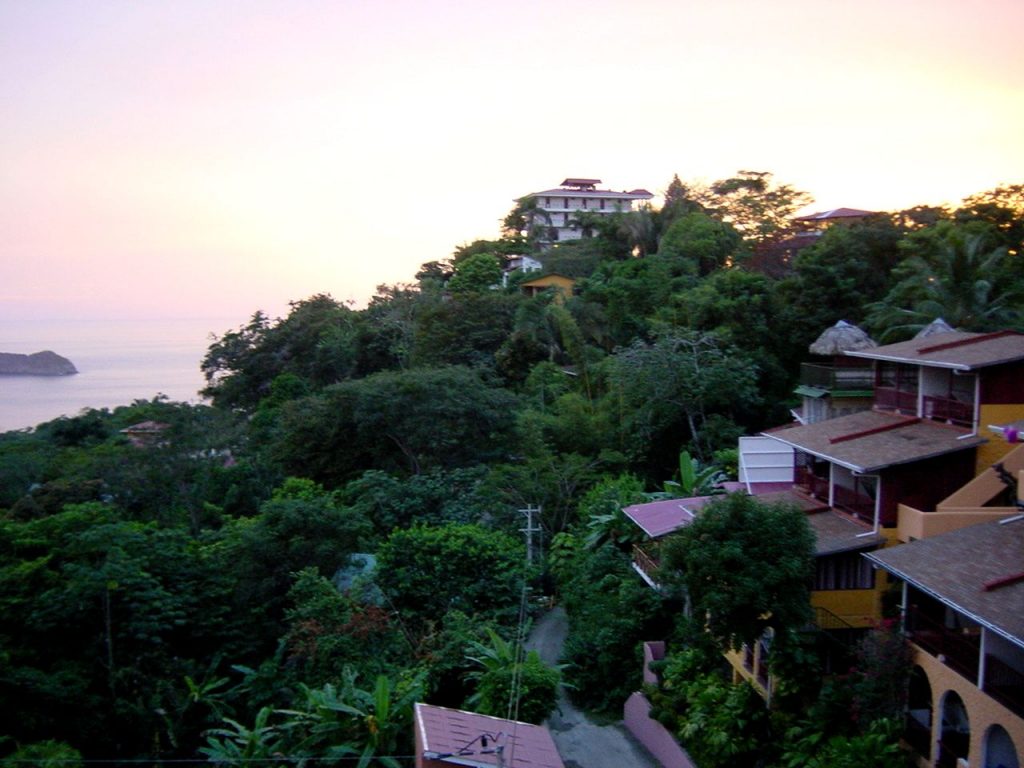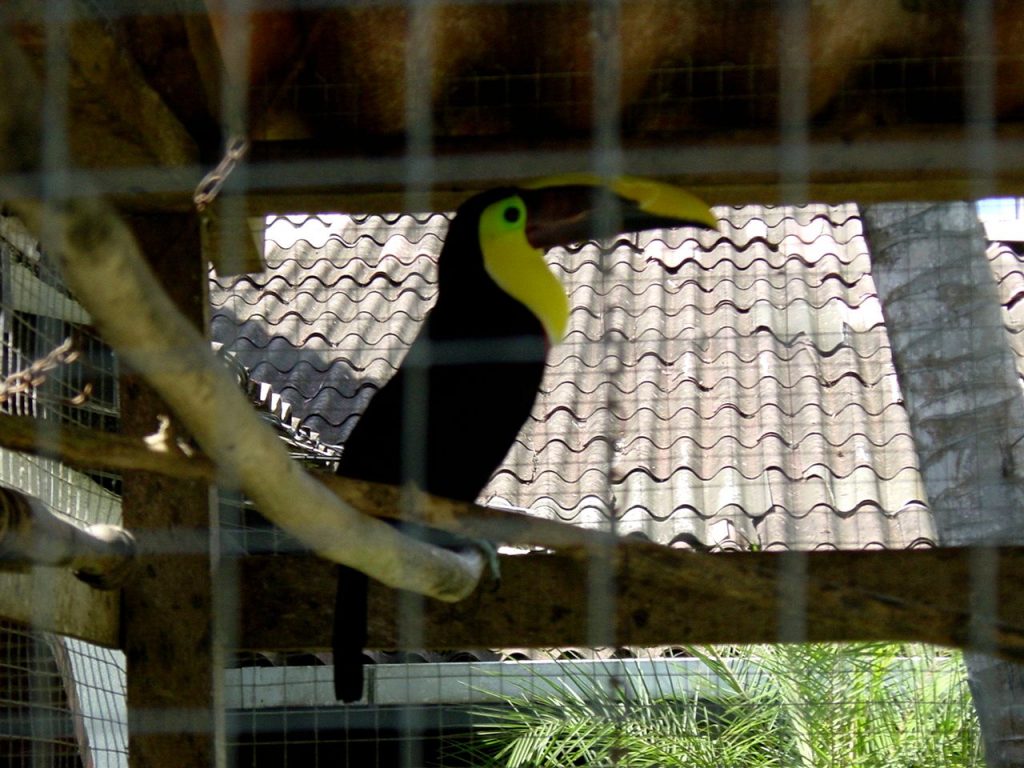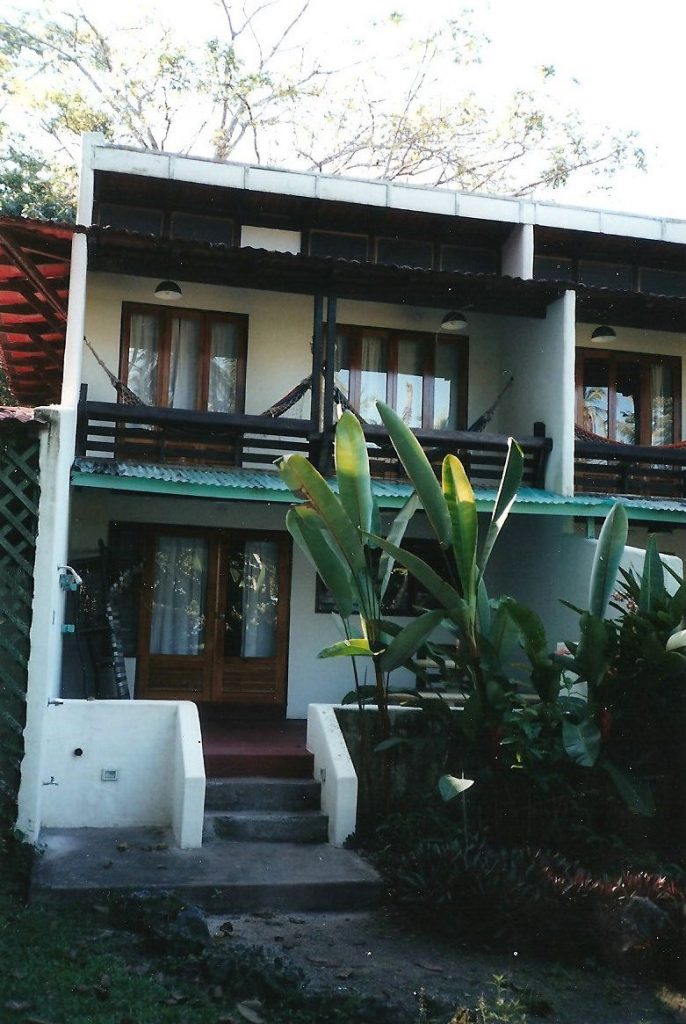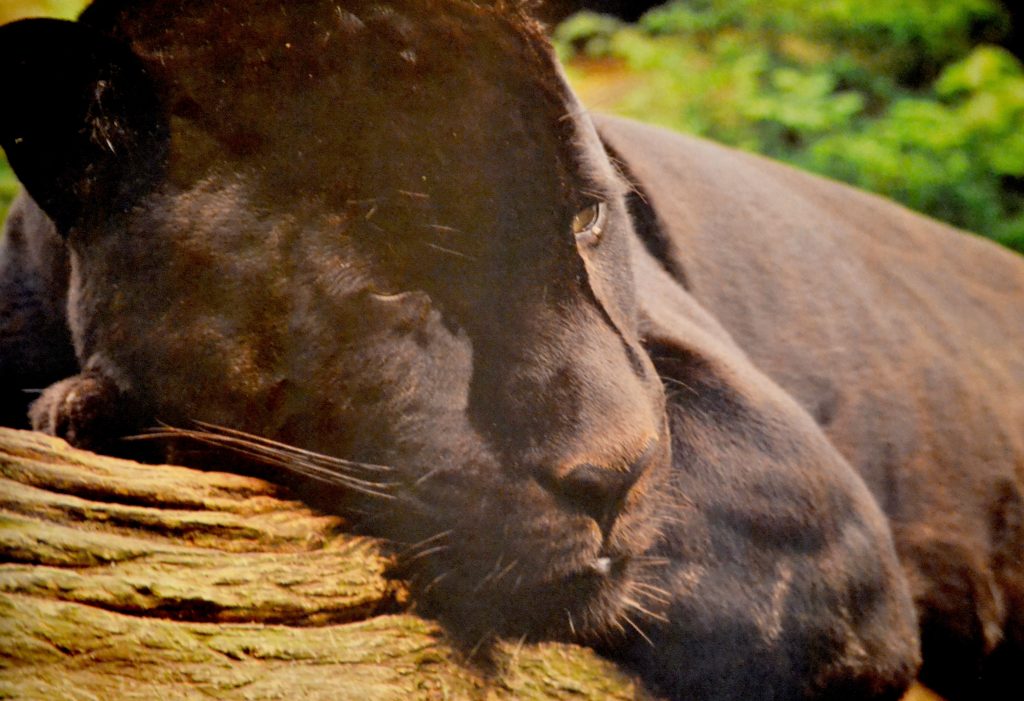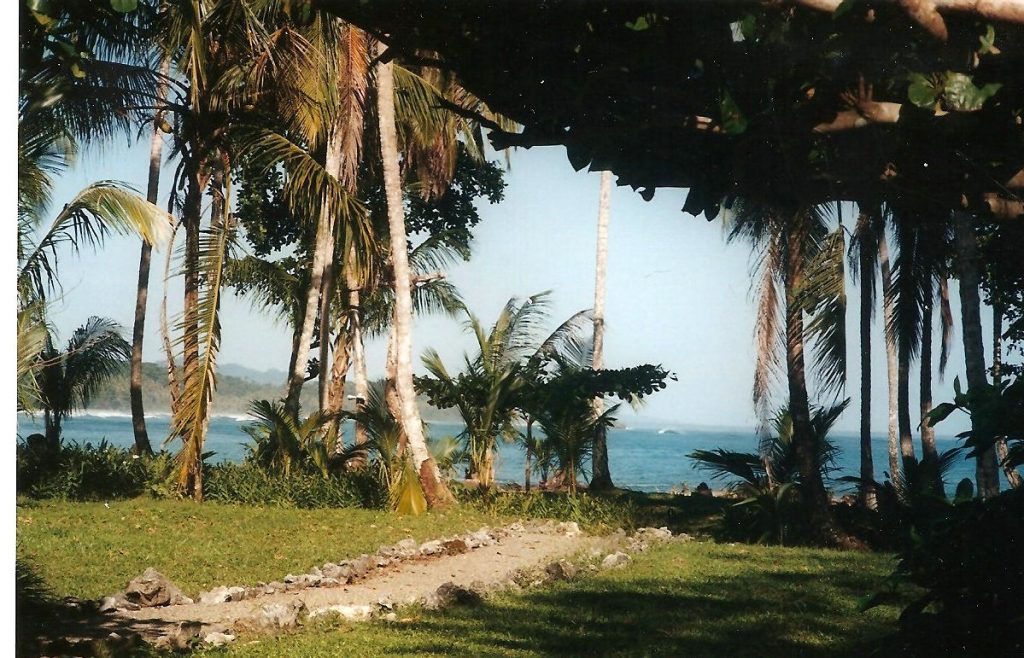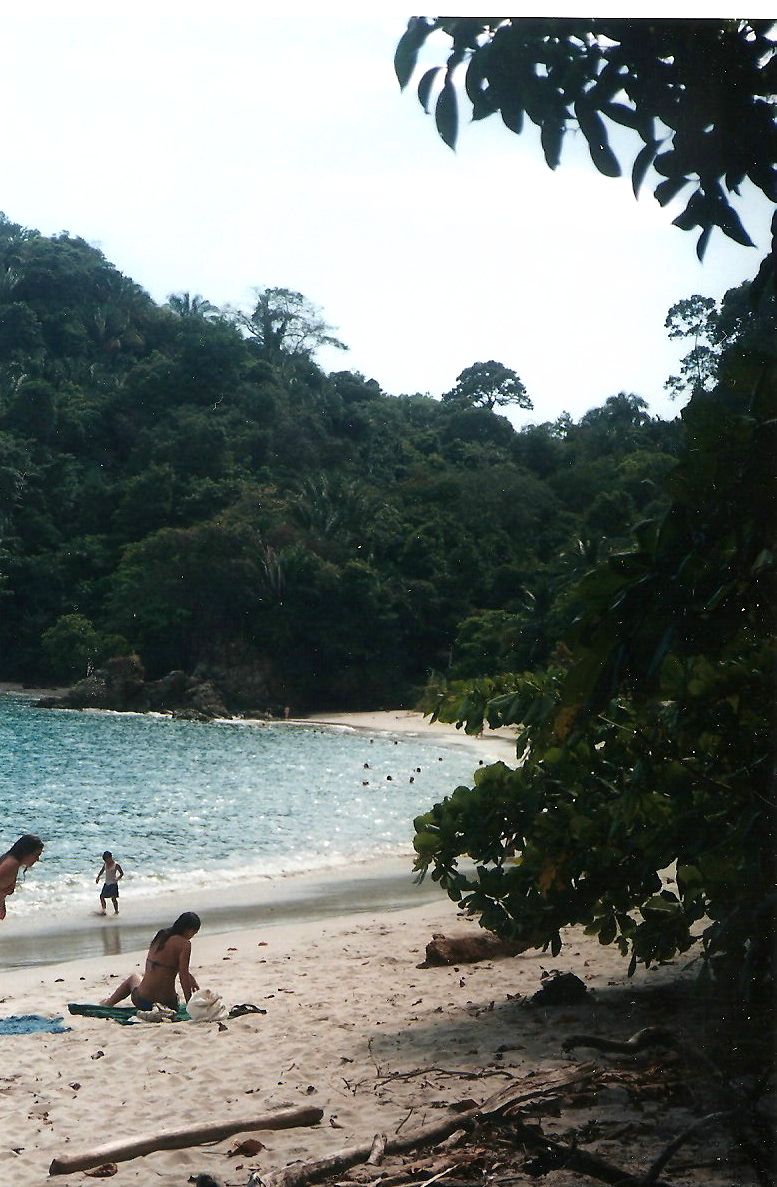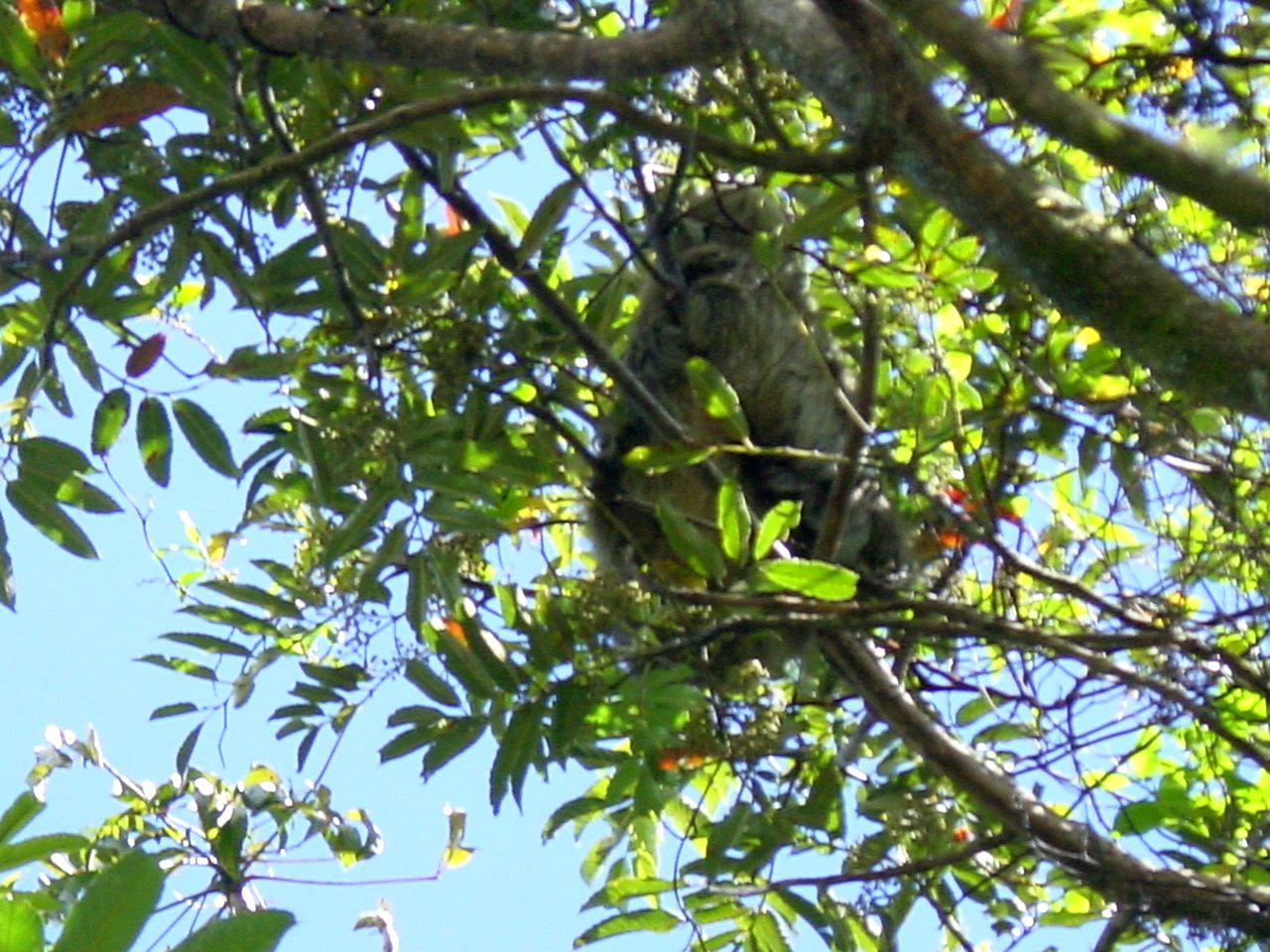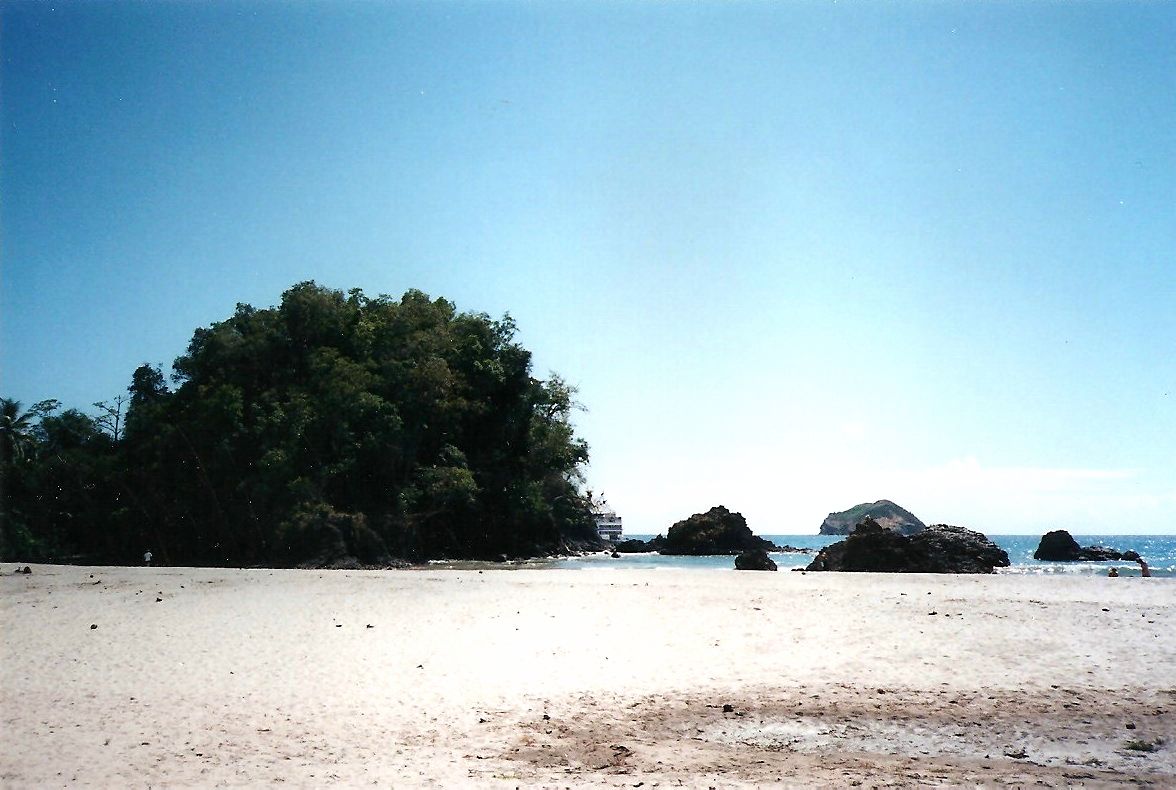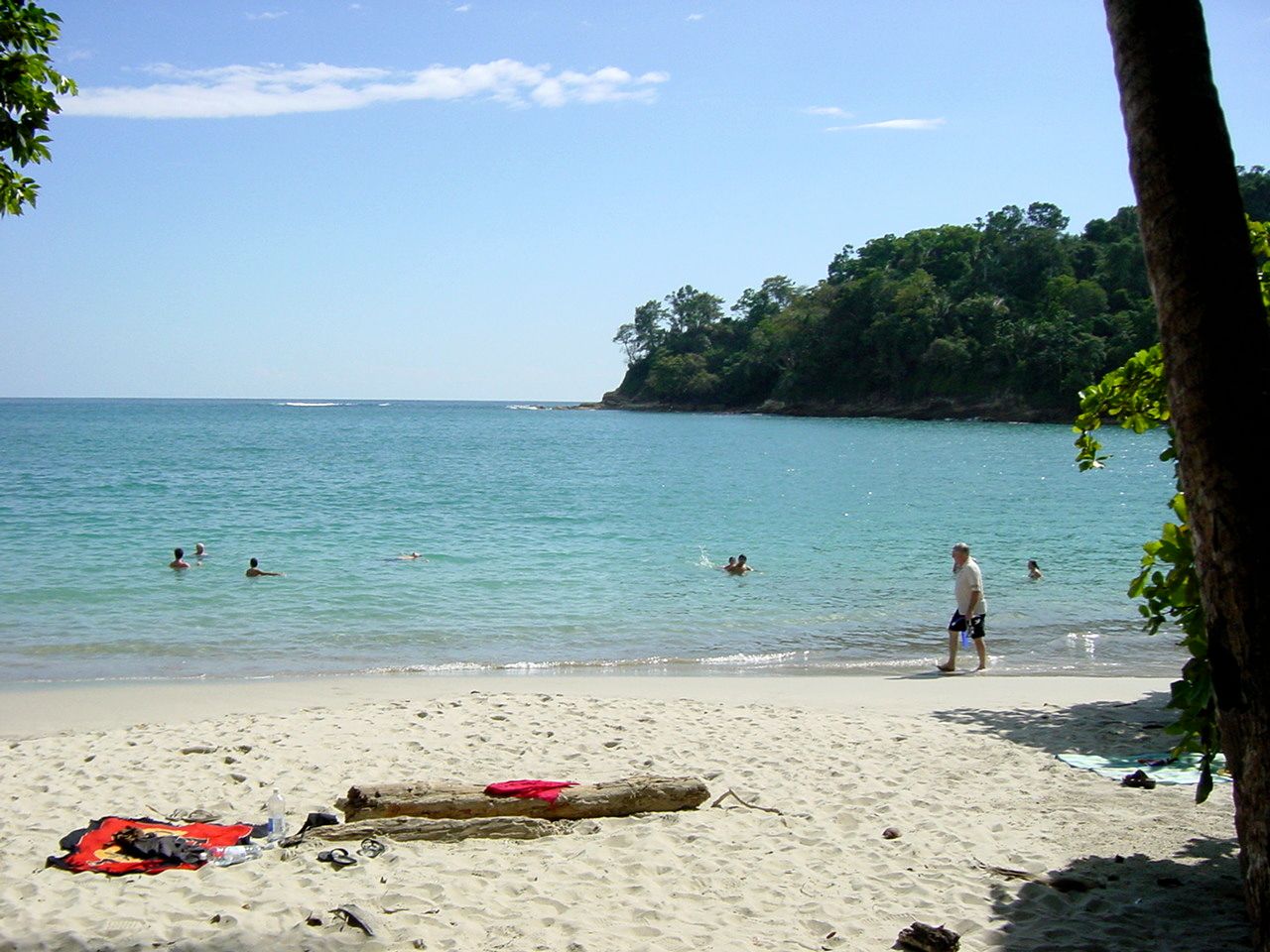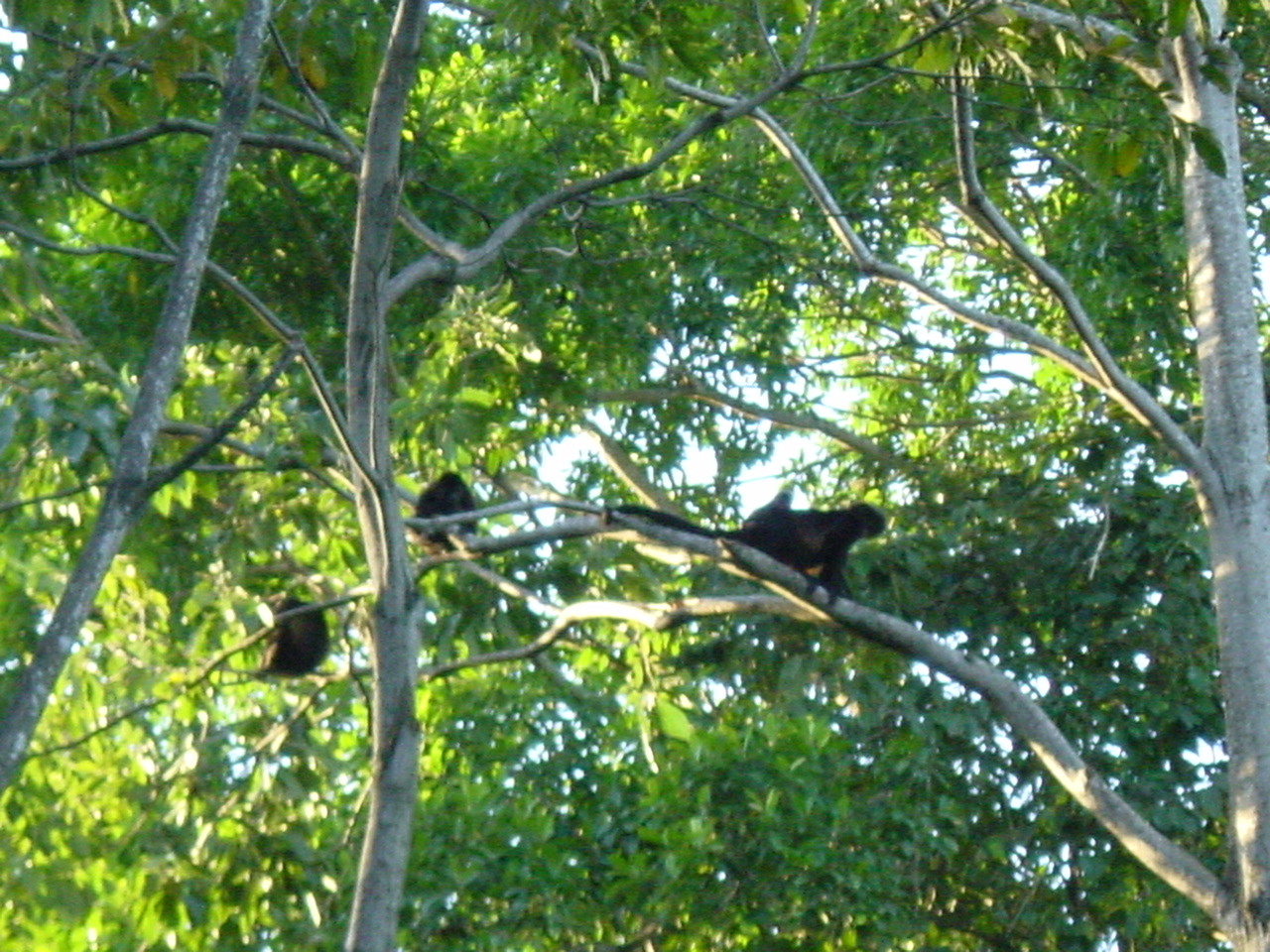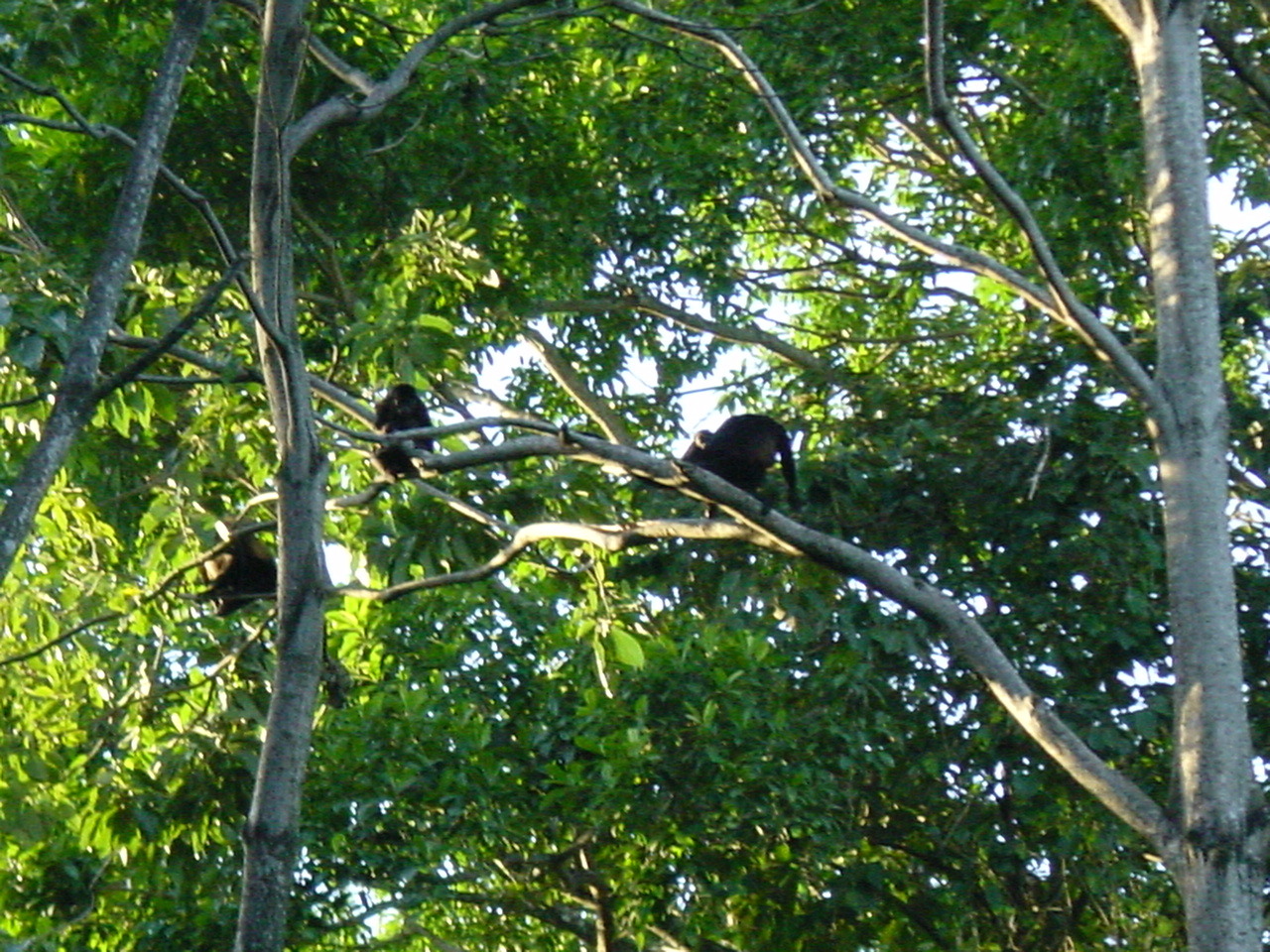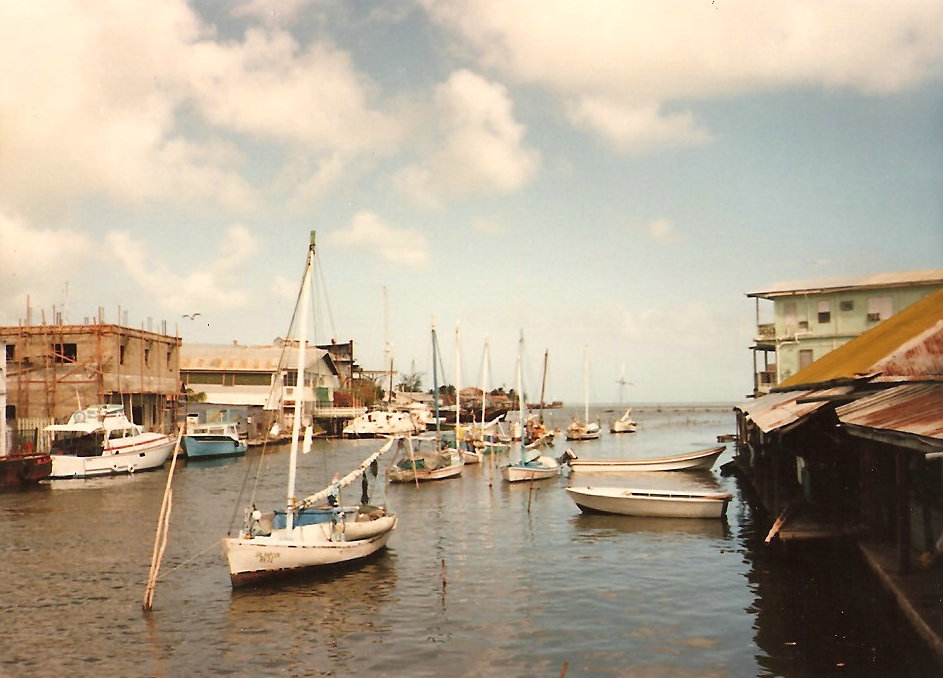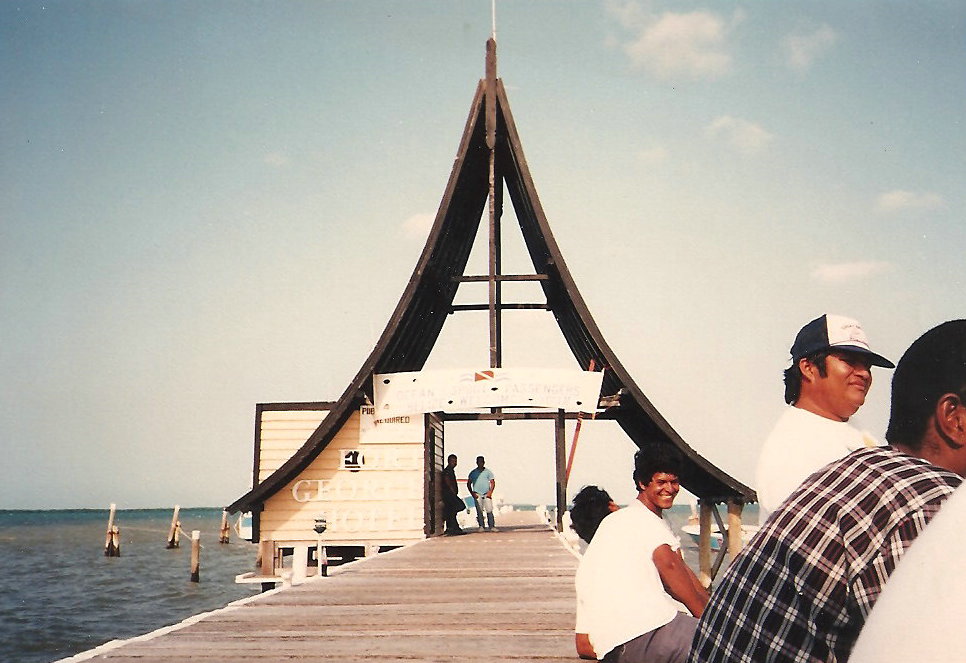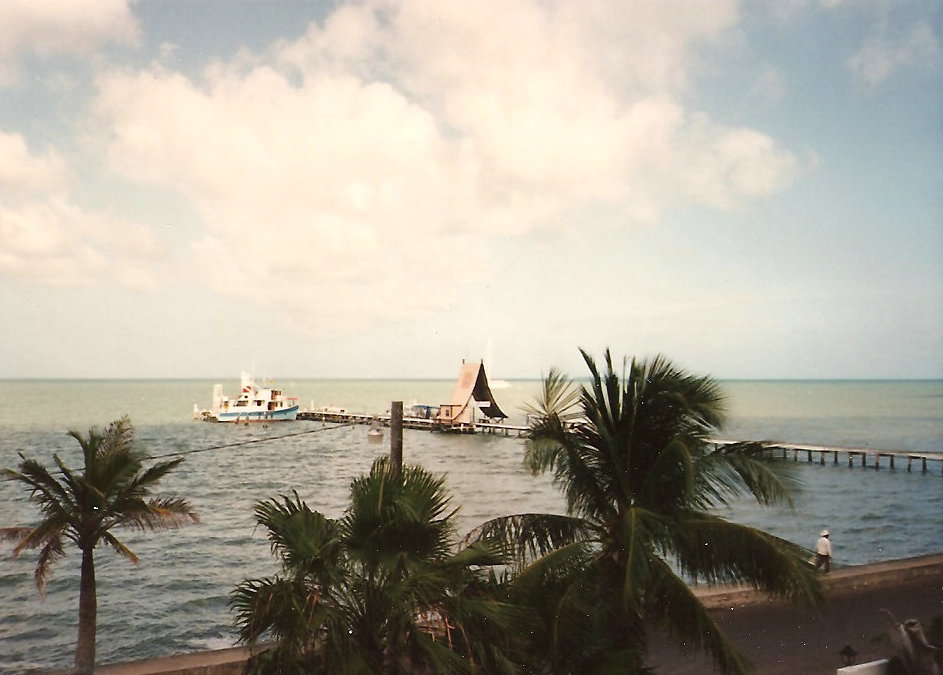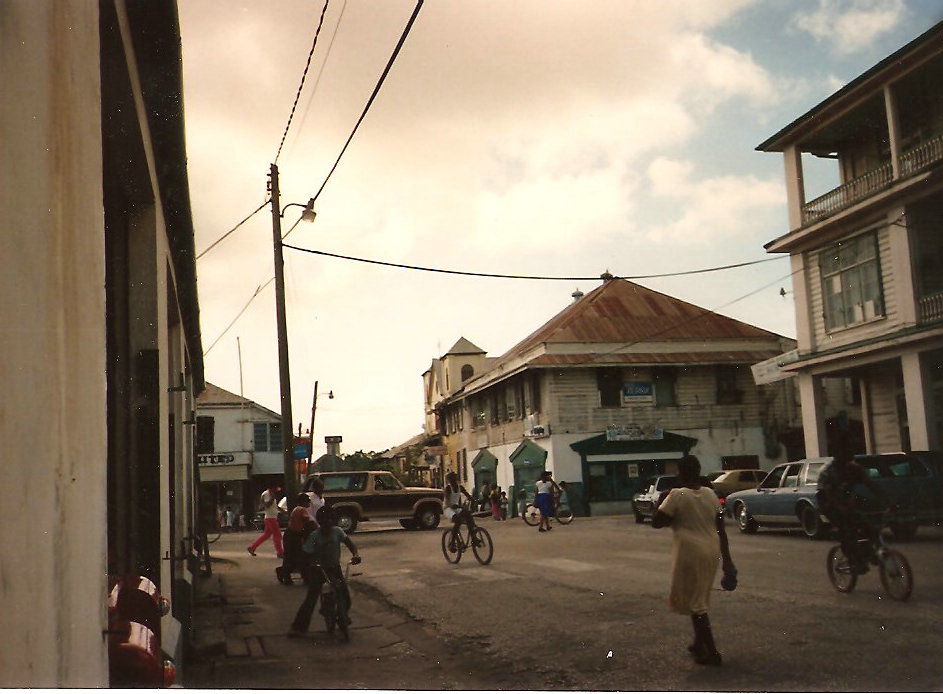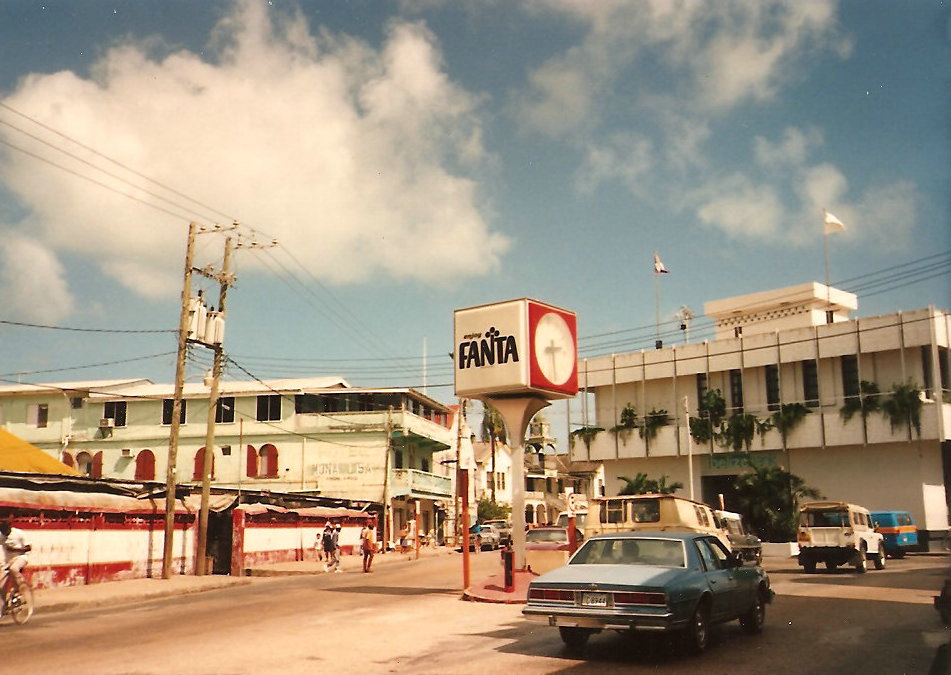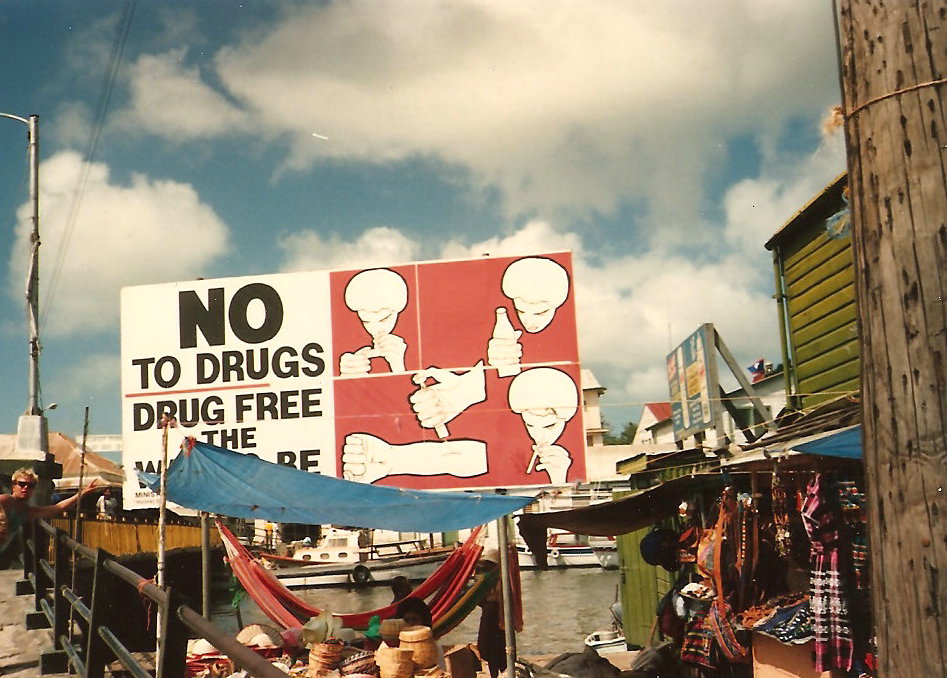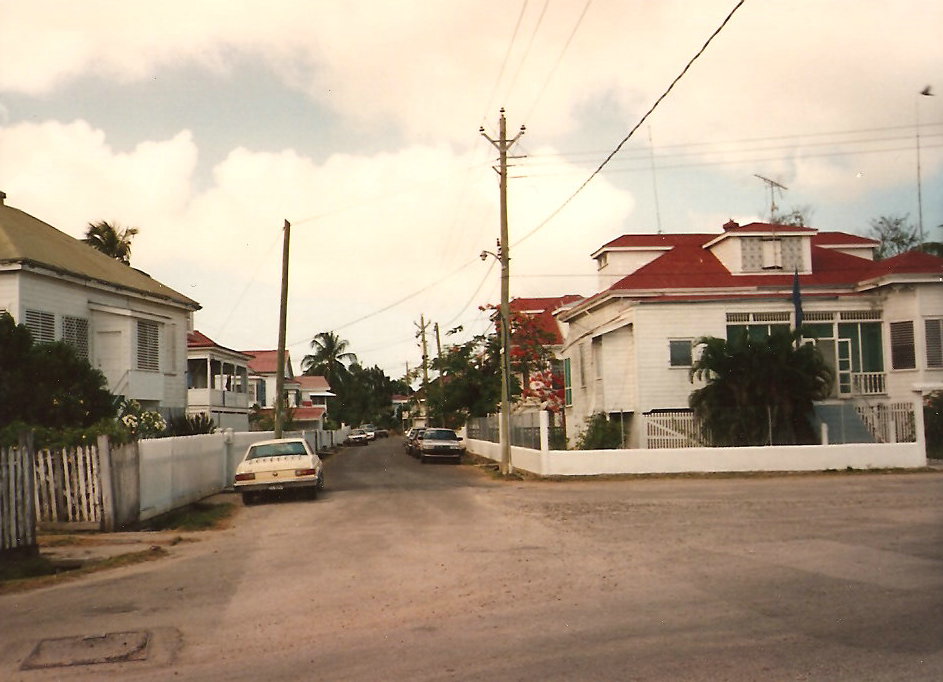The smell of coffee brought a smile to my face the morning after New Year’s Eve. Despite staying up late to welcome in the New Year, I had a restful sleep and was excited to make the journey to northern Bali. Before checking into the hotel on Lovina Beach, there would be plenty of time to make a few stops along the way. Wayan and his family wanted to drive around Denpasar to show me the busy city life of the south before reaching the more laid-back region of Singaraja.
Our first stop was in the heart of the island’s capital. First, the family needed to present an offering to their Hindu gods and offer up a prayer. There was a temple close by so, they completed their morning custom and then we visited one of the local shopping plazas to browse for souvenirs. This was the perfect location for purchasing a sarong for visiting the temples and there were so many options and a variety of designs. The children were eagerly excited to help me select the perfect one.
From clothing to temple decorations, the Balinese market offered a wide selection of products, quite similar to our large discount chains in the United States, but much more fun and exciting. Outside the shopping plaza were food carts that lined the street where a quick, healthy meal of meatball soups, noodle dishes or wraps could be purchased.
The Balinese are known for their intrinsic woodwork and take pride in the ornate furnishings they design. From decorating their everyday living space to adorning their family’s home temple, the Balinese artisans are very skilled and in high demand.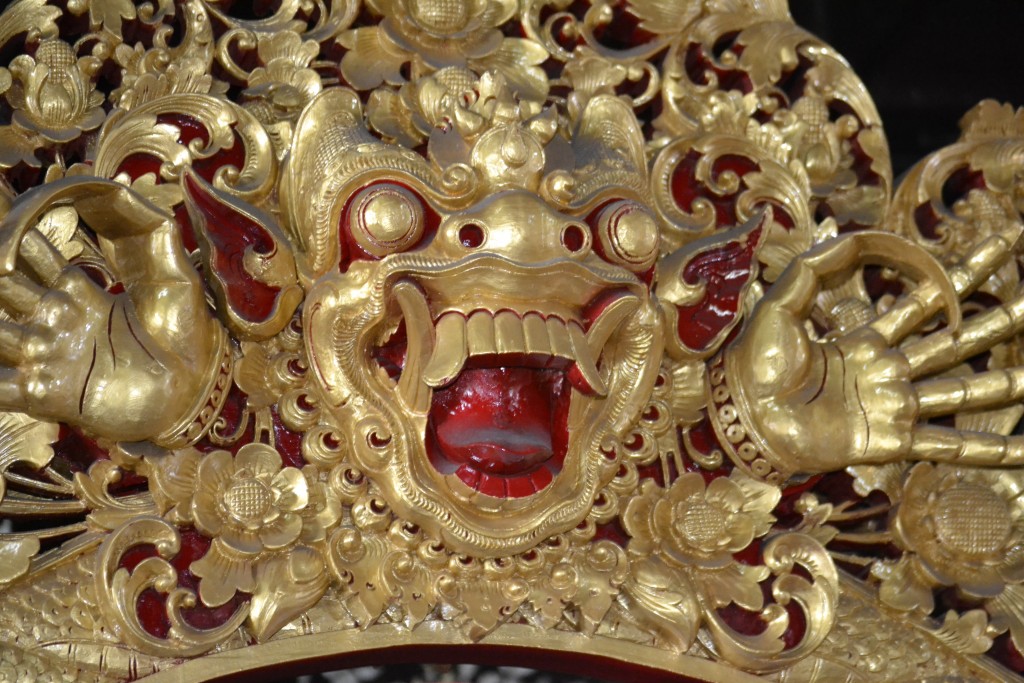
Wayan explained that each Hindu family has a small temple in their home to carry out their daily religious ceremonies. The altars are decorated in such detail to include carvings of the gods, with their exquisite artwork and vibrant colors. The shopping centers sell these types of items for their worship space and Wayan wanted to look at the new artwork on display. After purchasing a few bowls to hold their offerings to the gods, we were ready to start our journey north.
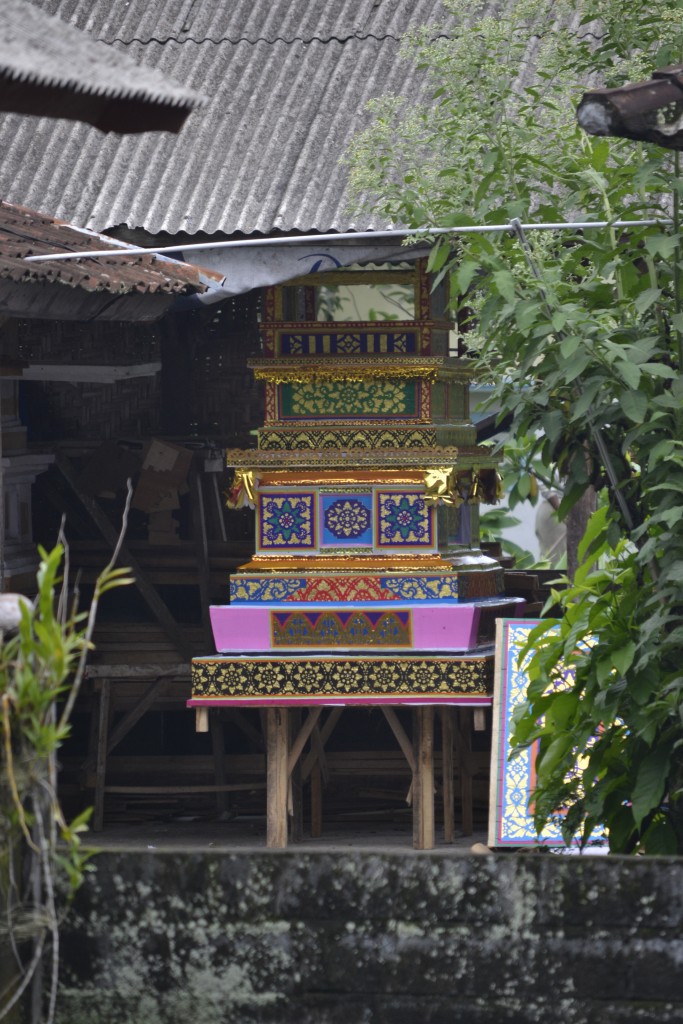
Before exiting the city, Wayan pointed out a tower-like structure, beautifully designed with vibrant colors known as a waddhu. Standing alongside the road, it had been created in preparation for a cremation ceremony and I learned that the higher the tower, the more important the person. This ceremony is one of Bali’s oldest customs that dates back to thousands of years.
The Balinese Cremation Ceremony, also known as Ngaben, is a spiritual ritual of the Hindu that is viewed as a celebration. It is believed that if the loved one has completed their purification on earth, they will be united with God. If the purification is incomplete, they will be reborn as someone else, returning to earth and starting the process again in a new life until purification is complete.
The date of the ceremonial rite will be selected by the Hindu priest and the family will make additional arrangements such as making the Lambu (the coffin), selecting the Gamelan musicians for the procession and purchasing the offerings to the gods.
After the service and procession, the priest will ignite the waddhu from the holy fire, burning the body until it has turned to ash. The remains will be scattered into the sea and ceremonial activities will last over the next twelve days in honor of their loved one that has passed.
With a two hour drive ahead of us, we left the city late that afternoon. The traffic began to lessen and the scenery to change in the most dramatic of ways. We traded in our stoplights and highways for mountains and rice fields. It was a quiet, relaxing drive and we made several stops to take some photos and enjoy the countryside.
We had been driving for about twenty minutes when Wayan’s wife, Candra noticed the fruit market on the side of the road. The fruit hanging from the poles is the durian fruit and when I told them I had not tried it before, they were happy to stop.
As soon as we exited the car, the strong smell of kerosene was overwhelming. In addition to its scent, the fruit has a spiky exterior. The durian’s pungent odor is one of its characteristics, but if you can get past it, the flesh is said to have a nutty custard flavor. The market provides free samples, so with a little coaching, I tried it.
I was happy that there were other fruit selections available as well, so I purchased bananas, rambutan and another local favorite, the starfruit.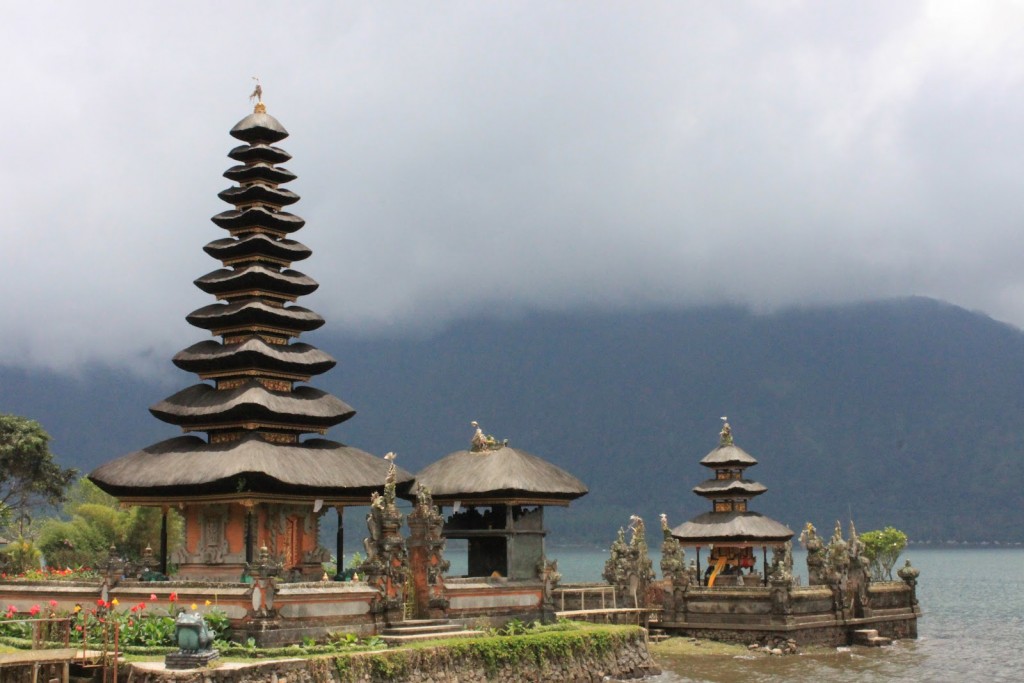
Our small snack of fruit was enough to tie us over until lunch, and it was time to make another stop. As we pulled into the Ulun Danu Temple, Wayan mentioned that this location is one of the most photographed temples in Bali. He knew that I wanted to see Bali’s dramatic landscapes and the view of the temple surrounded by the misty mountains was magical.
Close to the temple was a small food stand where we could order authentic Balinese food. I tried the Bakso soup made of chicken and noodles in a bone broth and had a small order of spinach chips with a peanut crust. The meal was extremely fresh and satisfying.
Across from the food stand, children and teens were hanging out with their friends on the pier. Some were holding fishing poles while other seemed to be catching up on the latest gossip at school. We sat along the deck and gazed out into the scenic view before continuing our journey towards Singaraja.
Soon after leaving the temple, the sky began to darken. Passing a small group of trees, I noticed a monkey on the side of the road. The children were just as excited to see him so we pulled over for a closer look. He reappeared in the clearing along with a couple of friends and seemed so unafraid of humans.
Pande, Wayan’s oldest son, told me about the temple near their home where several monkeys lived. Wayan and Candra mentioned that it was on our way to the celebration that we would be attending later in the week.
I thought about that monkey the rest of our drive into Lovina Beach and about the fact that he had no fear of people. Candra said that the monkeys are a protected animal on the island and that they find refuge in the many temples.
We arrived at the Aditya Beach Resort where I had made my reservations, checking in around 9. I said goodbye to the Sunarsa family, who would meet back up with me in a couple of days.
My room was perfect and I was so tired that I knew it would be another great night of sleep. As the Indonesians say, Selamat Malam! (Good night!)
Have you visited the island of Bali? Where did you stay and what did you do? I would love to hear about your adventure if you would kindly leave a message in the comments section below. Many thanks for following my visit to the island of Bali! Happy Travels!
Disclosure: Please refer to our blog disclaimer tab for more information.
What to See and What to Do:
Erlangga 2 Shopping Center
Jalan Nusa Kambangan no. 162
Denpasar, Bali, Indonesia
- Admission Cost: Free, open to the public
- Hours: 8AM to 10PM
- Amenities: Food court close to venue
- Length of Time to Visit: 2 – 3 hours
- Tips for Your Visit: Best kept secret for souvenirs and local items at inexpensive prices. Some of the best deals on woodwork, sarongs, souvenirs, t-shirts, Bali textiles and artwork.
Ulun Danu Bratan Temple
Jalan Raya Candi Kunung-Bedugul
Tabanan, Bali, Indonesia
Where to Stay:
Aditya Beach Resort
Jalan Raya Lovina, Lovina Beach, North Bali, Indonesia
Telephone: +62 362 41059
Email: info@adityalovinabali.com
Where to Eat:
Ulun Danu Bratan Temple – Food Stalls
Jalan Raya Candi Kunung-Bedugul
Tabanan, Bali, Indonesia
I cannot get enough of the Bakso soup. I love the spices and it tastes so fresh!!
What to Eat:
- Babi Guling: Suckling pig, which is similar to BBQ pork in the US.
- Bakso Soup: Indonesian soup made with meatballs, noodles, spices, vegetables and broth
- Gado-Gado: A cold salad of vegetables served with a peanut sauce
- Nasi Goreng: Fried noodles with lots of vegetables and a choice of meat, topped with peanuts and an egg.
- Pisang Goreng: Fried Bananas, served with palm sugar, honey, flaked coconut or ice cream
- Sate Ayam: Chicken on a stick usually served with a peanut sauce
- Spring Rolls: Crispy pastry filled with minced meat and mixed vegetables and then fried, usually served with a chili sauce
What to Read:
- Balilicious, by Becky Wicks
- Eat, Pray, Love, by Elizabeth Gilbert
- A House in Bali, by Colin McPhee
- Love and Death in Bali, by Vicky Baum
- Snowing in Bali, by Kathryn Bonella
- Under the Volcano: A story of Bali, by Cameron Forbes
Photo Guide for North Bali:
- Git Git Waterfall
- Mount Batur
- Sekumpal Waterfalls
- Tamblingan Lake
- Twin Lakes Viewpoint
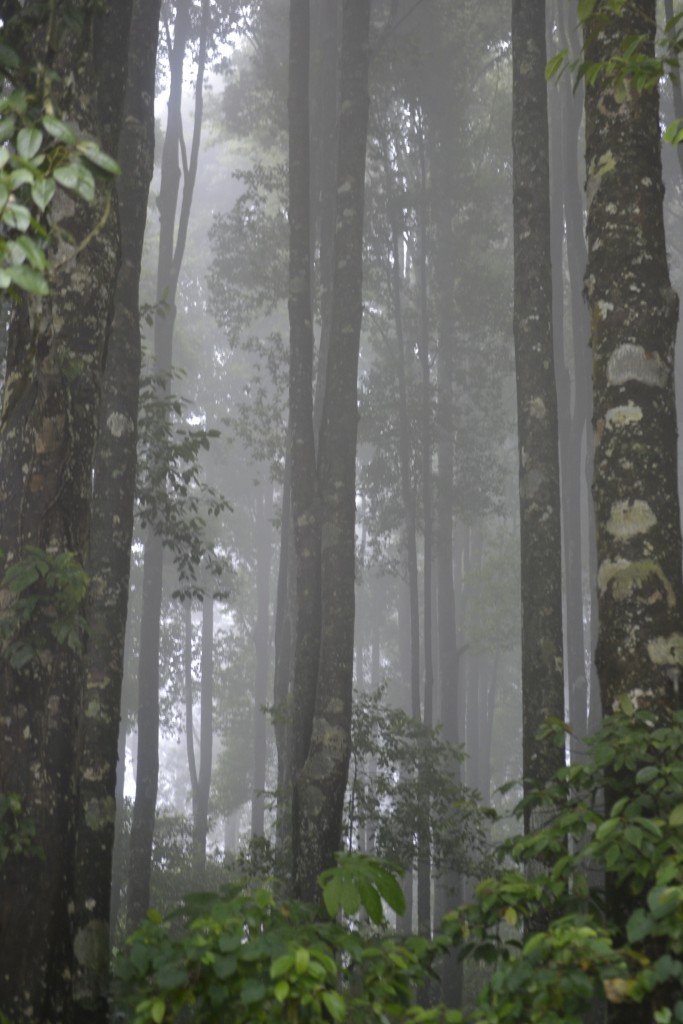
Forest on the Way to North Bali
